21 Reasons Why Proofreading Is Important
| Candace Osmond
Candace Osmond
Candace Osmond studied Advanced Writing & Editing Essentials at MHC. She’s been an International and USA TODAY Bestselling Author for over a decade. And she’s worked as an Editor for several mid-sized publications. Candace has a keen eye for content editing and a high degree of expertise in Fiction.
Proofreading is an essential step in the writing process, ensuring clear, concise, and well-organized messages. It involves meticulously reviewing a text to correct errors in grammar, punctuation, spelling, consistency, and formatting.
Unlike editing, which focuses on broader aspects like structure and content, proofreading zeroes in on fine details to polish the final draft. Neglecting this crucial step can lead to misunderstandings and compromise the author’s credibility.
Delve deeper to grasp the significance of proofreading and how it can elevate your writing prowess.
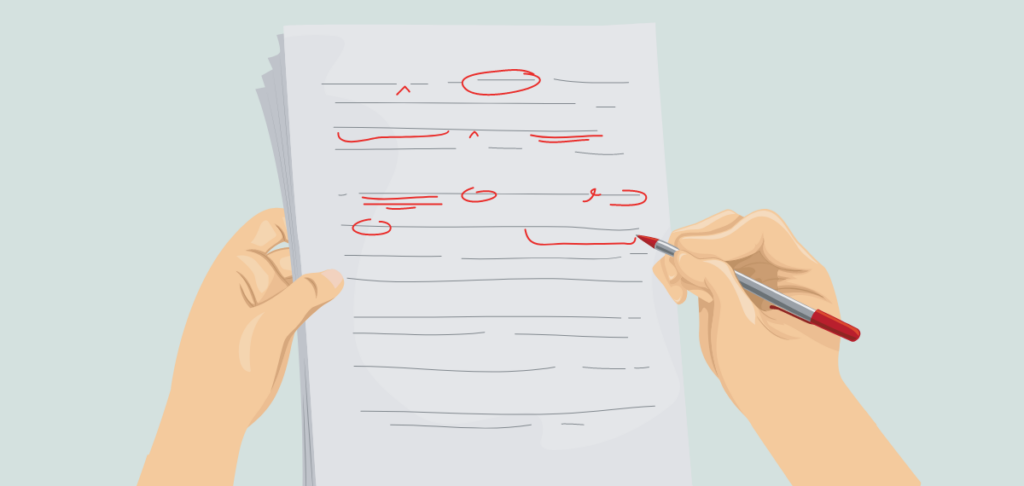

Why Proofreading Is Important
Proofreading holds immense importance as it meticulously corrects grammar, spelling, punctuation, and convention errors, ensuring language accuracy and consistency. It offers a detailed examination of the text, focusing on surface-level mistakes often overlooked in editing. Acting as the final review, proofreading ensures the document’s completeness and professionalism.
In my experience participating in hiring panels, I’ve observed that cover letters and resumes lacking proofreading are swiftly disregarded. Simple errors like poor wording, sentence structure issues, and capitalization problems become glaringly evident, leaving a negative impression on the applicant’s presentation skills.
Devoting time to proofread your materials yields multiple benefits, including error elimination, enhanced professionalism, improved credibility, and potentially increased earnings. The following reasons underscore why investing time in proofreading your work is worthwhile.
Eliminates Errors
Proofreading plays a crucial role in identifying and rectifying spelling mistakes, grammatical errors, punctuation errors, and typos. Eliminating these errors makes your writing more accurate and easier to understand.
Proofreading allows you to review the flow and organization of your writing. This process ensures that your ideas are presented clearly, logically, and coherently, enhancing your work’s overall readability. Your goal is to allow your reader to understand your message without confusion or the need to seek clarification.
Readability
Proofreading allows you to refine the language, tone, and style of your writing. It enables you to choose the most appropriate words, phrases, and expressions to convey your message effectively and engage your readers.
Proofreading serves as a final quality check, enabling you to spot any weaknesses that may have been missed during editing. It allows you to correct awkward sentence structures, unclear statements, or factual inaccuracies. Addressing these issues prevents confusion among your readers or ensures that you appear as knowledgeable and competent as you truly are.
Professionalism

Proofreading ensures that your content is error-free, regardless of whether you’re a student, a professional, or an aspiring writer. This commitment to presenting polished work contributes to a positive and professional image, demonstrating your dedication to quality, your pride in your writing, and your respect for your audience.
Protects Reputation
Proofreading helps eliminate spelling mistakes, grammatical errors, and typos that can undermine the credibility and professionalism of the content. By presenting error-free content, you demonstrate attention to detail and a commitment to clear communication, which enhances your reputation as a competent and reliable communicator.
Consistency
Proofreading ensures consistency in the use of formatting, such as headings, font styles, and indentation. It also helps maintain adherence to style guides, citation formats, and referencing systems, enhancing the overall coherence and professionalism of the document.
Persuasiveness
Proofreading plays a crucial role in making your writing more persuasive. It allows you to review the evidence and examples you’ve used to support your arguments. By ensuring their relevance, accuracy, and strength, you can make your arguments more convincing.
Well-supported arguments can sway your audience to accept your viewpoint, making your writing more effective and influential.
Facilitates Learning
Proofreading requires careful reading and understanding of the written content. By reviewing and correcting errors, you reinforce your understanding of the subject matter. This active engagement with the text enhances your comprehension and retention of the information being presented and, in turn, provides you the skills to better facilitate new ideas and research in your own writing.
Moreover, well-proofread content conveys the intended message clearly, contributing further to the learning process.
Boosts Grades

By incorporating proofreading into your writing process, you can enhance the overall quality of your work and increase your likelihood of achieving higher grades. Your attention to proofreading details allows you to check once again the accuracy of your material and the clarity of your message. Teachers appreciate not having to re-read materials during the grading process.
Credibility
Well-proofread content demonstrates attention to detail and reflects professionalism. It helps establish your credibility as a writer or proofreader, whether it’s an academic paper, a professional report, or any other form of written communication.
People who can easily discern your message and are not distracted by convention use, spelling, or formatting issues are more likely to search your work out in the future.
Improves Search Engine Optimization (SEO)
Proofreading allows you to review the use of keywords throughout your content. By checking the placement, density, and relevance of keywords, you can ensure that they are strategically incorporated in a natural and effective manner. This helps search engines understand the topic and relevance of your content, potentially improving its visibility in search results.
Saves Money
Proofreading helps catch errors that could lead to costly consequences. For example, in legal or financial documents, even a minor typographical error or misplaced decimal point can have significant financial implications. By identifying and correcting such errors, proofreading can prevent financial losses or legal complications.
This also extends to products that may end up in print to help avoid misprints or reprints, which can quickly add up in cost.
Prevents Misunderstandings
Proofreading minimizes the risk of miscommunication or misinterpretation of your ideas. By catching errors, you can ensure that your intended meaning is accurately conveyed, preventing confusion or misunderstanding.
Readers who have to re-read materials to try and understand your message are more likely to misunderstand your attempts. Depending on the importance of the work, this could potentially cause issues in your job or even financially.
Enhances Reader Experience

By presenting error-free content, you provide readers with a positive reading experience. They can focus on your message without being distracted by spelling or grammatical errors. This positive experience fosters trust, engagement, and a favorable perception of your work.
Strengthens Arguments
Proofreading strengthens the overall quality of your arguments by ensuring clarity, coherence, and effectiveness in your writing. It allows you to evaluate the logical flow of your ideas and the coherence of your arguments.
You can make your arguments more robust and compelling by identifying and correcting any weaknesses, such as unclear statements or unsupported claims. Strong arguments are essential for persuading your audience and convincing them of your viewpoint, making proofreading a vital step in the writing process.
Supports Brand Image
Proofreading ensures consistency in language usage, tone, and style, which is essential for maintaining a consistent brand image. Whether proofreading for a company, organization, or personal brand, ensuring error-free content reinforces a consistent and professional brand identity.
Aids in Effective Communication
Proofreading ensures that ideas are expressed coherently. By reviewing sentence structure, word choice, and overall flow, you can eliminate confusing or ambiguous statements and enhance the overall readability of your work. This clarity enhances your reputation as a clear and effective communicator.
Builds Trust
Proofreading helps identify and correct factual errors, inaccuracies, or misleading information. By ensuring the accuracy of your content, you protect your reputation as a reliable and knowledgeable source of information. Being meticulous about the facts and presenting accurate information helps build trust and credibility.
Facilitates Translation
Proofreading facilitates translation by ensuring accuracy, verifying language and grammar, maintaining consistency in terminology and style, and fostering feedback. By thoroughly reviewing and refining the translated content, proofreading contributes to producing high-quality translations that accurately convey the intended meaning to the target audience.
Reflects Care and Effort
Proofreading allows you to make necessary revisions and improve the overall quality of your work. The practice reflects care and effort by showcasing attention to detail, dedication to accuracy, commitment to clarity, pride in presentation, and ensuring accuracy. By investing the time and effort to review and refine your work meticulously, you demonstrate your commitment to producing high-quality, error-free written content.
Master the art of precision writing!
Embark on our proofreading and editing course.
Proofreading plays a vital role in ensuring written communication’s clarity, accuracy, and professionalism. By meticulously reviewing and correcting grammar, spelling, punctuation, and consistency errors, proofreading enhances the overall quality of documents, instills credibility, and fosters trust with the audience.
It is essential for writers to allocate adequate time and resources to the proofreading stage or consider seeking professional proofreading services for critical documents. By integrating thorough proofreading practices into their writing routines, writers can significantly enhance the effectiveness and impact of their work.
Remember, the investment in proofreading not only improves the quality of your writing but also reflects your commitment to excellence and attention to detail. Embrace the proofreading process with enthusiasm and diligence, and reap the rewards of clear, polished, and error-free communication in your writing journey.
Grammarist is a participant in the Amazon Services LLC Associates Program, an affiliate advertising program designed to provide a means for sites to earn advertising fees by advertising and linking to Amazon.com. When you buy via the links on our site, we may earn an affiliate commission at no cost to you.
2024 © Grammarist, a Found First Marketing company. All rights reserved.
Have a language expert improve your writing
Run a free plagiarism check in 10 minutes, generate accurate citations for free.
- Knowledge Base
- Language rules
Quick Guide to Proofreading | What, Why and How to Proofread
Published on June 21, 2019 by Shona McCombes . Revised on December 11, 2023.
Proofreading means carefully checking for errors in a text before it is published or shared. It is the very last stage of the writing process , when you fix minor spelling and punctuation mistakes, typos, formatting issues and inconsistencies.
Proofreading is essential for any text that will be shared with an audience, whether it’s an academic paper, a job application, an online article, or a print flyer. Depending on your skills and budget, you can choose to proofread the text yourself, use an AI proofreader , or hire a professional.
Instantly correct all language mistakes in your text
Upload your document to correct all your mistakes in minutes

Table of contents
Proofreading example, proofreading vs editing, proofreading tips and tricks, choosing a proofreading service, recommended proofreading service, frequently asked questions about proofreading.
In the publishing industry, proofreaders usually check a printed “proof copy” of the text and mark corrections using specialized proofreading marks. In other fields, though, professional proofreaders often work with digital texts and make corrections directly using the track changes feature in Microsoft Word or Google Docs.
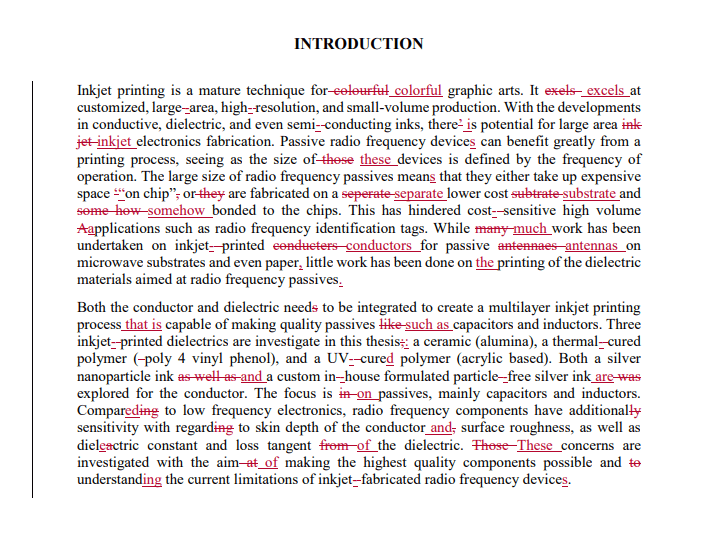
Check for common mistakes
Use the best grammar checker available to check for common mistakes in your text.
Fix mistakes for free
Editing and proofreading are different steps in the process of revising a text. Editing can involve major changes to content, structure and language, but proofreading focuses only on minor errors and inconsistencies.
Often a text will go through several stages of editing before it is proofread. The table below shows some common steps in the editing process.
The four stages of editing and proofreading
| Type of editing | What it involves |
|---|---|
| Step 1: Content editing | Revising an early draft of a text, often making significant changes to the content and moving, adding or deleting entire sections (also known as developmental or substantive editing). |
| Step 2: Line editing | Revising the use of language to communicate your story, ideas, or arguments as as possible. This might involve changing words, phrases and sentences and restructuring to improve the flow of the text. |
| Step 3: Copy editing | Polishing individual sentences to ensure correct grammar, a clear , and stylistic consistency, often following the rules of a specific style guide (such as or ). Copy editors don’t change the content of a text, but if a sentence or is ambiguous or awkward, they can work with the author to improve it. |
| Step 4: Proofreading | Carefully checking for any remaining errors, such as misspelled words, , and stylistic inconsistencies. In print publishing, proofreaders are also responsible for checking the formatting (e.g., page numbers and line spacing). |
Do I need to go through every stage?
It depends on the type and length of text. You don’t need to strictly follow the division of tasks shown above, but a good piece of writing will nearly always go through a similar process of revising, editing and proofreading.
In the traditional publishing process, the stages are clearly divided, with different professionals responsible for each revision. A separate proofread of the final print version is necessary, especially because new typographical errors can be introduced during production.
However, in texts that don’t need to be formatted for mass printing, there is often more overlap between the steps. Some editorial services combine copy editing and proofreading into a single stage (sometimes called proof-editing), where grammar, syntax and style are addressed at the same time as minor spelling and punctuation errors (e.g., commas , quotation marks and parentheses ).
Basic proofreading skills are important for anyone who writes. For everyday texts, such as business reports, blogs, or college papers, there are some techniques you can use to proofread efficiently and effectively before sharing your work.
Edit your writing first
Before you get to the final stage of proofreading, make sure you’ve thoroughly revised and edited your work. There’s no point spending time fixing minor errors if you might later remove whole sections or rewrite paragraphs. Only proofread once you’ve got a completed final draft that you’re happy with.
Take a break from the text
When you’ve been reading and rereading the same words for hours or days, it becomes much harder to notice common mistakes . Before proofreading, set your work aside for a while so that you can look at it with fresh eyes.
Ideally you should wait at least a day or two before final proofreading, but if you’re on a tight deadline, even a half hour break can help.
Proofread a printout
Seeing your words on a printed page is another useful strategy for noticing things that might have escaped your attention on the screen. If the final version will be printed, this is also a good chance to check your formatting is correct and consistent on the page.
Use digital shortcuts
While reading from print can help you spot errors, an online proofreader can help you fix them efficiently. Most obviously, run a spell check—but don’t rely on the computer to catch every mistake.
If you notice that you’ve repeatedly misspelled a particular word, inconsistently capitalized a term, or switched between UK and US English , you can use the Find and Replace function to fix the same mistake throughout the document.
Be careful, though, and don’t use “replace all”. Click through and check every replacement to avoid accidentally adding more errors!
Learn from your mistakes
Pay attention to the errors that keep recurring in the text. This can help you avoid them in future.
Knowing what to look out for is the most challenging part of proofreading. You’ll probably notice obvious typos, but subtle mistakes in grammar and punctuation can be harder to recognize. The table below shows some of the most common errors to look out for.
What to watch out for when proofreading
| Spelling and word choice confusions | ) ( ) |
|---|---|
| Misplaced punctuation | , |
| Stylistic inconsistency | of terms or titles |
| Formatting issues | and |
If you lack confidence in your written English, or if you just want to ensure you haven’t missed anything in an important document, you might want to consider using a professional proofreading service.
There are two main options: you can hire a freelance proofreader, or you can send your document to a proofreading and editing company. There are various things to consider when choosing a service.
Do you only need proofreading or also editing?
It’s important to have a clear idea of how much work your text requires. People often think they only need proofreading when, in reality, the text would benefit from some level of editing as well.
If you send a proofreader a document full of grammar mistakes, confusing sentences, and difficult-to-follow paragraphs, they might decline the job or recommend a different service.
Many freelancers and companies offer both editing and proofreading, either separately (with separate pricing) or combined into one service. Make sure you understand exactly what kind of changes are included. Will the editor only correct minor errors, or will they also comment on awkward phrasings and structural issues?
Should the proofreader be specialized in your type of document?
Many different types of documents require proofreading: from literary novels to technical reports, from PhD dissertations to promotional flyers . The best choice of service is usually one that’s specialized in your type of document.
While proofreaders and copy editors generally don’t need expert knowledge of the text’s content, the process will be smoother if your proofreader is familiar with the rules and conventions of the genre you’re working in.
How much does proofreading cost?
The cost of proofreading varies widely. The price depends partly on the proofreader’s location and level of experience, the type and length of text, and the turnaround time. Rates are usually calculated per word or per hour. If the service also focuses on formatting, it may be priced per page.
How long does proofreading take?
You should try to leave plenty of time for editing and proofreading, but if you have a hard deadline, it’s important to find a service that can deliver on time.
Most companies offer various choices of deadline, but it’s best to plan a minimum of 24 hours for proofreading. The price will generally be lower if you can wait longer to have your document returned.
For very long documents, it might not be possible to complete the job in 24 hours, especially if you also need editing services. For combined proofreading and copy editing, you can expect an experienced editor to complete around 10,000–15,000 words in a single day.
How can you check the quality and reliability of the service?
Like everything on the internet, the quality of proofreading services varies widely. Do your research before you choose one. There are a few things you can check:
- Online reviews : are they rated on independent review sites (e.g., Trustpilot ) or freelancer platforms (e.g., Upwork )?
- Qualifications : do they have professional training and experience? If you’re using a company, how do they select and train proofreaders?
- Customer service : are they easily contactable and responsive to inquiries?
- Complaints policy : what happens if you’re not happy with the job? Can you get a refund or a second edit?
| Type | Advantages | Disadvantages |
|---|---|---|
| Automated proofreaders | ||
| Freelance proofreaders | ||
| Proofreading companies |
Don't submit your assignments before you do this
The academic proofreading tool has been trained on 1000s of academic texts. Making it the most accurate and reliable proofreading tool for students. Free citation check included.

Try for free
Scribbr offers proofreading services for students and academic editing services for all sorts of study-related documents, including essays, papers, theses, dissertations, reports, and proposals.
The basic service combines proofreading and copy editing at a rate of $0.017 per word. You can choose between a 24-hour, 3-day, or 7-day turnaround time.
Scribbr is rated 4.6 on Trustpilot, with 13,448 reviews so far.
Editing and proofreading are different steps in the process of revising a text.
Editing comes first, and can involve major changes to content, structure and language. The first stages of editing are often done by authors themselves, while a professional editor makes the final improvements to grammar and style (for example, by improving sentence structure and word choice ).
Proofreading is the final stage of checking a text before it is published or shared. It focuses on correcting minor errors and inconsistencies (for example, in punctuation and capitalization ). Proofreaders often also check for formatting issues, especially in print publishing.
Whether you’re publishing a blog, submitting a research paper , or even just writing an important email, there are a few techniques you can use to make sure it’s error-free:
- Take a break : Set your work aside for at least a few hours so that you can look at it with fresh eyes.
- Proofread a printout : Staring at a screen for too long can cause fatigue – sit down with a pen and paper to check the final version.
- Use digital shortcuts : Take note of any recurring mistakes (for example, misspelling a particular word, switching between US and UK English , or inconsistently capitalizing a term), and use Find and Replace to fix it throughout the document.
If you want to be confident that an important text is error-free, it might be worth choosing a professional proofreading service instead.
The cost of proofreading depends on the type and length of text, the turnaround time, and the level of services required. Most proofreading companies charge per word or page, while freelancers sometimes charge an hourly rate.
For proofreading alone, which involves only basic corrections of typos and formatting mistakes, you might pay as little as $0.01 per word, but in many cases, your text will also require some level of editing , which costs slightly more.
It’s often possible to purchase combined proofreading and editing services and calculate the price in advance based on your requirements.
There are many different routes to becoming a professional proofreader or editor. The necessary qualifications depend on the field – to be an academic or scientific proofreader, for example, you will need at least a university degree in a relevant subject.
For most proofreading jobs, experience and demonstrated skills are more important than specific qualifications. Often your skills will be tested as part of the application process.
To learn practical proofreading skills, you can choose to take a course with a professional organization such as the Society for Editors and Proofreaders . Alternatively, you can apply to companies that offer specialized on-the-job training programmes, such as the Scribbr Academy .
Cite this Scribbr article
If you want to cite this source, you can copy and paste the citation or click the “Cite this Scribbr article” button to automatically add the citation to our free Citation Generator.
McCombes, S. (2023, December 11). Quick Guide to Proofreading | What, Why and How to Proofread. Scribbr. Retrieved July 30, 2024, from https://www.scribbr.com/language-rules/what-is-proofreading/
Is this article helpful?
Shona McCombes
Other students also liked, punctuation in academic writing: common errors | examples, how to revise your college admissions essay | examples, get unlimited documents corrected.
✔ Free APA citation check included ✔ Unlimited document corrections ✔ Specialized in correcting academic texts
- Link to facebook
- Link to linkedin
- Link to twitter
- Link to youtube
- Writing Tips
What Does Proofreading Mean? Definition and Checklist
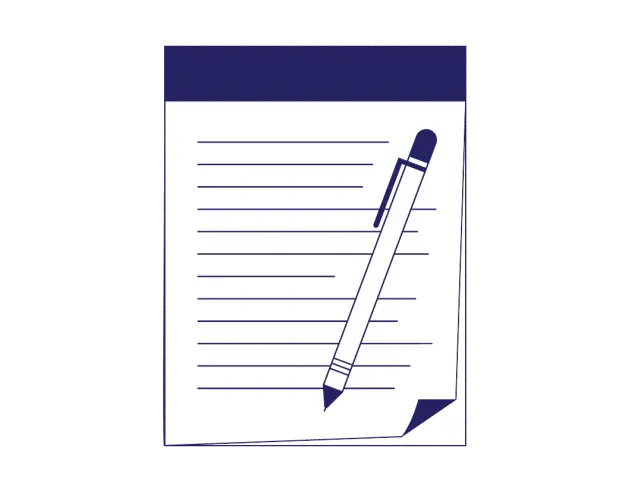
6-minute read
- 7th February 2023
Proofreading is an important step in the writing process that ensures high-quality, professional, error-free writing. In this article, you’ll learn all about proofreading, including effective techniques and tips and a checklist you can use at home.
What Is Proofreading?
Proofreading is the process of carefully reviewing written work to find and correct errors in grammar, punctuation, spelling, and formatting. It is the final step in the writing process; it ensures clean, clear, and professional writing before submission or publication. Keep in mind that proofreading differs from other writing steps, such as revising or editing , so be sure you know how the steps differ and when they should be completed in the writing process.
The Importance of Proofreading
Proofreading is important because it helps you catch mistakes you may have made during the writing stage. Proofreading ensures that your work is polished and professional and that your ideas are clear. Proofreading is especially important for writing that will be viewed by a larger audience or published: novels, short stories, online articles, etc. In formal writing, such as academic papers, business proposals, and resumes, proofreading is equally important because it shows professionalism and attention to detail from the writer.
How to Proofread
While proofreading can be as simple as reading over an email before hitting send . it can be more involved , depending on the type of document in question. Proofreading involves reading your work carefully, line by line, and looking for errors in grammar, punctuation, spelling, and formatting.
Tips for Effective Proofreading
Whether you are proofreading your own writing or that of others, here are some great tips to make sure you don’t miss a stray comma!
Leave Plenty of Time
Make sure you have plenty of time to proofread before your deadline, especially if you are proofreading your own writing. When you are proofreading your own writing, it can be particularly difficult to catch mistakes. If possible, wait a couple of days after you finish writing before you go back and proofread. This way, you will have fresh eyes and a new perspective.
Read Your Work
Reading your work in different ways will highlight mistakes that may be missed otherwise. Here are three ways you can read your work to catch mistakes and get a different perspective on your writing:
Read from the bottom to the top: Start with the last sentence and go all the way to the first. This helps isolate each sentence so you can focus on errors.
Read out loud: Read your work out loud in funny or strange voices. Pretend you are a robot or an opera singer to highlight grammar errors or awkward sentences that need your attention.
Use the read aloud function: Most word processing systems have a read aloud option. Listening to someone else (or a computer) read your work gives you the perspective of a listener or a different reader and further aids in the proofreading process.
Use a Proofreading Checklist
A checklist can alleviate some of the mental fatigue of trying to remember everything you need to look for in a text. You’ll find a great proofreading checklist below to use at home.
Take Breaks
You are not a super(wo)man or a machine. Take a ten-minute break every hour or so to give your eyes and mind a rest. When you become too familiar with a text, you will start to skim over mistakes and errors. Be sure to get movement in also during your breaks to avoid any physical stiffness or discomfort.
Get a Fresh Set of Eyes
Whether it’s a friend, a peer, or a professional proofreader , having someone else look for mistakes and give feedback is always helpful. They will have a different perspective and can offer fresh ideas to enhance your writing.
Proofreading Checklist
If you’re not sure what to look for while proofreading, here’s a checklist you can copy and paste for future use.
● Spelling: Check for misspelled and commonly confused words (e.g., there vs. their or affect vs. effect ).
● Grammar: Check for subject–verb agreement , verb tenses , and article use .
Find this useful?
Subscribe to our newsletter and get writing tips from our editors straight to your inbox.
● Punctuation: Check for proper use of periods , commas , semicolons , colons, apostrophes , and quotation marks .
● Capitalization : Check for capitalization of proper nouns, the first word of sentences, and specified words in titles and headings (nouns, verbs, adjectives, etc.).
● Formatting: Check for consistency in fonts, spacing, and alignment.
● Contractions ( I’m , can’t , should’ve , etc.): Do not use contractions in academic or business writing.
● Clarity: Check for wordiness, redundancy, and awkward phrasing.
● Accuracy: Check for any factual errors or inaccuracies.
● Citations and the reference list : Check for proper in-text citation and reference list formatting.
● Consistency: Check for consistency in language, tone, and style.
Or if you’re serious about proofreading properly, check out our official Proofed Proofreading Checklist . It’s what our expert proofreaders use!
Proofreading is an important step in the writing process because it helps to ensure that your work is clear, professional, and easy to understand. Be sure to set time aside to proofread your work, take frequent breaks during the process, and use a checklist so you don’t miss a mistake.
What are some common mistakes to look for when proofreading?
Check for spelling, punctuation, grammar, capitalization, and formatting mistakes. Make sure the writing is clear, concise, and consistent. Reword sentences that are wordy, overly lengthy, or awkward. Overall, you want to have error-free, polished, and professional text.
How can I improve my proofreading skills?
The best way to improve your proofreading skills is through practice and experience. Having a strong command of English grammar and writing mechanics is imperative. Consider taking a proofreading course, such as the one offered by Knowadays , to get expert feedback and materials if you are serious about becoming a proofreader.
What’s the difference between proofreading and editing?
Proofreading focuses on grammar, spelling, punctuation, and formatting mistakes. Think of it as the final polish in the writing process. Editing comes before proofreading in the writing process and focuses on the content, organization, and overall structure of the writing.
Where can I hire a professional to proofread my work for me?
Proofed has a team of more than 750 professional editors with expertise in fields across the board. We work with researchers, students, Fortune 500 companies, and independent authors to make their writing clean, professional, and ready for publication. Take advantage of our free trial today.
Share this article:
Post A New Comment
Got content that needs a quick turnaround? Let us polish your work. Explore our editorial business services.
How to write a nonprofit grant proposal.
If you’re seeking funding to support your charitable endeavors as a nonprofit organization, you’ll need...
9-minute read
How to Use Infographics to Boost Your Presentation
Is your content getting noticed? Capturing and maintaining an audience’s attention is a challenge when...
8-minute read
Why Interactive PDFs Are Better for Engagement
Are you looking to enhance engagement and captivate your audience through your professional documents? Interactive...
7-minute read
Seven Key Strategies for Voice Search Optimization
Voice search optimization is rapidly shaping the digital landscape, requiring content professionals to adapt their...
4-minute read
Five Creative Ways to Showcase Your Digital Portfolio
Are you a creative freelancer looking to make a lasting impression on potential clients or...
How to Ace Slack Messaging for Contractors and Freelancers
Effective professional communication is an important skill for contractors and freelancers navigating remote work environments....

Make sure your writing is the best it can be with our expert English proofreading and editing.
- Academic Proofreading
- Business Proofreading
- Content Creation
- Application Review
- Express Service
- Microsoft Track Changes
- Testimonials
- Areas of Expertise
- Our Editors
- Join Our Team
- English Writing Guides
- Academic Referencing Guides
- English Blog
- Instant Quote
- Your basket is currently empty.
The Power of Proofreading: Why It Matters and How to Master It
Proofreading is a crucial step in the writing process that often gets overlooked. Whether you’re a student submitting a paper, a professional drafting a report, or a blogger creating content, proofreading ensures your writing is clear, polished, and error-free. This detailed guide explores the importance of proofreading, offers practical tips, and provides examples to help you become a more effective proofreader.
Why Proofreading Matters
- Enhances Clarity and Comprehension : Proofreading helps to catch and correct errors that can obscure your message. Clear writing ensures that your ideas are communicated effectively.
- Improves Professionalism : Error-free documents reflect well on the writer, showcasing attention to detail and professionalism. This is particularly important in academic and professional settings.
- Prevents Misunderstandings : Correcting grammatical and punctuation errors prevents misunderstandings that could arise from unclear or incorrect language.
- Boosts Credibility : Well-proofread documents enhance your credibility and reliability as a writer, making your readers more likely to trust and respect your work.
Tips for Effective Proofreading
- Take a Break : After writing, take a break before you start proofreading. This helps you return with fresh eyes and a clearer perspective.
- Read Aloud : Reading your text aloud can help you catch errors you might miss when reading silently. It forces you to slow down and pay attention to each word.
- Use a Checklist : Create a proofreading checklist to ensure you don’t overlook common errors. Include items like grammar, punctuation, spelling, and consistency.
- Focus on One Type of Error at a Time : Focus on one category of errors at a time, such as punctuation or verb tense. This methodical approach helps you catch more mistakes.
- Change the Format : Change the font, size, or color of your text. This can trick your brain into seeing the document in a new way, making it easier to spot errors.
- Proofread Backwards : Read your document from the end to the beginning. This unconventional method can help you focus on individual words and sentences, rather than the overall meaning.
- Use Tools, But Don’t Rely on Them : Use spelling and grammar check tools to catch obvious mistakes, but don’t rely solely on them. They can miss context-specific errors or suggest incorrect changes.
- Get a Second Pair of Eyes : If possible, have someone else proofread your work. A fresh perspective can catch errors you might have missed.
Common Proofreading Examples and Errors
- Incorrect: “Their going to the market.”
- Corrected: “They’re going to the market.”
- Incorrect: “Lets eat grandma.”
- Corrected: “Let’s eat, grandma.”
- Incorrect: “She don’t like ice cream.”
- Corrected: “She doesn’t like ice cream.”
- Incorrect: “He read it two.”
- Corrected: “He read it too.”
- Incorrect: “The team are winning.”
- Corrected: “The team is winning.”
- Incorrect: “She walked to the store and buys milk.”
- Corrected: “She walked to the store and bought milk.”
- Incorrect: “Its a beautiful day.”
- Corrected: “It’s a beautiful day.”
- Incorrect: “I went to the store I bought some milk.”
- Corrected: “I went to the store, and I bought some milk.”
Proofreading in Practice: An Example
Original Text: “The quick brown fox jumps over the lazy dog. The dogs owner was not amused. Its important to proofread your work because it helps ensure that your writing is clear and error-free. Proofreading can be tedious but their are several techniques you can use to make the process easier.”
Proofread Text: “The quick brown fox jumps over the lazy dog. The dog’s owner was not amused. It’s important to proofread your work because it helps ensure that your writing is clear and error-free. Proofreading can be tedious, but there are several techniques you can use to make the process easier.”
Proofreading is an indispensable skill that elevates the quality of your writing. By dedicating time and attention to this final step, you can enhance clarity, professionalism, and credibility in your work. Remember, effective proofreading is not just about catching typos—it’s about refining your writing to communicate your ideas as effectively as possible.
Start incorporating these proofreading tips into your writing routine, and you’ll likely see a significant improvement in the quality of your work.
Our Proofreading Services
At Express Proofreading, we offer a professional proofreading service for academics and businesses. We are able to ensure that your work is not only free from spelling mistakes and grammatical errors but we also check syntax, sentence structure and are able to recommend improvements and suggestions that are relevant to your work.
To obtain an instant quote for us to proofread your work, click the Instant Quote button and upload your document and our Quote Generator will calculate an instant quote based upon the word count of your document. Once you are happy with your quote, you can then click Place Order and proceed to our secure checkout page.

Editing and Proofreading
What this handout is about.
This handout provides some tips and strategies for revising your writing. To give you a chance to practice proofreading, we have left seven errors (three spelling errors, two punctuation errors, and two grammatical errors) in the text of this handout. See if you can spot them!
Is editing the same thing as proofreading?
Not exactly. Although many people use the terms interchangeably, editing and proofreading are two different stages of the revision process. Both demand close and careful reading, but they focus on different aspects of the writing and employ different techniques.
Some tips that apply to both editing and proofreading
- Get some distance from the text! It’s hard to edit or proofread a paper that you’ve just finished writing—it’s still to familiar, and you tend to skip over a lot of errors. Put the paper aside for a few hours, days, or weeks. Go for a run. Take a trip to the beach. Clear your head of what you’ve written so you can take a fresh look at the paper and see what is really on the page. Better yet, give the paper to a friend—you can’t get much more distance than that. Someone who is reading the paper for the first time, comes to it with completely fresh eyes.
- Decide which medium lets you proofread most carefully. Some people like to work right at the computer, while others like to sit back with a printed copy that they can mark up as they read.
- Try changing the look of your document. Altering the size, spacing, color, or style of the text may trick your brain into thinking it’s seeing an unfamiliar document, and that can help you get a different perspective on what you’ve written.
- Find a quiet place to work. Don’t try to do your proofreading in front of the TV or while you’re chugging away on the treadmill. Find a place where you can concentrate and avoid distractions.
- If possible, do your editing and proofreading in several short blocks of time. Your concentration may start to wane if you try to proofread the entire text at one time.
- If you’re short on time, you may wish to prioritize. Make sure that you complete the most important editing and proofreading tasks.
Editing is what you begin doing as soon as you finish your first draft. You reread your draft to see, for example, whether the paper is well-organized, the transitions between paragraphs are smooth, and your evidence really backs up your argument. You can edit on several levels:
Have you done everything the assignment requires? Are the claims you make accurate? If it is required to do so, does your paper make an argument? Is the argument complete? Are all of your claims consistent? Have you supported each point with adequate evidence? Is all of the information in your paper relevant to the assignment and/or your overall writing goal? (For additional tips, see our handouts on understanding assignments and developing an argument .)
Overall structure
Does your paper have an appropriate introduction and conclusion? Is your thesis clearly stated in your introduction? Is it clear how each paragraph in the body of your paper is related to your thesis? Are the paragraphs arranged in a logical sequence? Have you made clear transitions between paragraphs? One way to check the structure of your paper is to make a reverse outline of the paper after you have written the first draft. (See our handouts on introductions , conclusions , thesis statements , and transitions .)
Structure within paragraphs
Does each paragraph have a clear topic sentence? Does each paragraph stick to one main idea? Are there any extraneous or missing sentences in any of your paragraphs? (See our handout on paragraph development .)
Have you defined any important terms that might be unclear to your reader? Is the meaning of each sentence clear? (One way to answer this question is to read your paper one sentence at a time, starting at the end and working backwards so that you will not unconsciously fill in content from previous sentences.) Is it clear what each pronoun (he, she, it, they, which, who, this, etc.) refers to? Have you chosen the proper words to express your ideas? Avoid using words you find in the thesaurus that aren’t part of your normal vocabulary; you may misuse them.
Have you used an appropriate tone (formal, informal, persuasive, etc.)? Is your use of gendered language (masculine and feminine pronouns like “he” or “she,” words like “fireman” that contain “man,” and words that some people incorrectly assume apply to only one gender—for example, some people assume “nurse” must refer to a woman) appropriate? Have you varied the length and structure of your sentences? Do you tends to use the passive voice too often? Does your writing contain a lot of unnecessary phrases like “there is,” “there are,” “due to the fact that,” etc.? Do you repeat a strong word (for example, a vivid main verb) unnecessarily? (For tips, see our handouts on style and gender-inclusive language .)
Have you appropriately cited quotes, paraphrases, and ideas you got from sources? Are your citations in the correct format? (See the UNC Libraries citation tutorial for more information.)
As you edit at all of these levels, you will usually make significant revisions to the content and wording of your paper. Keep an eye out for patterns of error; knowing what kinds of problems you tend to have will be helpful, especially if you are editing a large document like a thesis or dissertation. Once you have identified a pattern, you can develop techniques for spotting and correcting future instances of that pattern. For example, if you notice that you often discuss several distinct topics in each paragraph, you can go through your paper and underline the key words in each paragraph, then break the paragraphs up so that each one focuses on just one main idea.
Proofreading
Proofreading is the final stage of the editing process, focusing on surface errors such as misspellings and mistakes in grammar and punctuation. You should proofread only after you have finished all of your other editing revisions.
Why proofread? It’s the content that really matters, right?
Content is important. But like it or not, the way a paper looks affects the way others judge it. When you’ve worked hard to develop and present your ideas, you don’t want careless errors distracting your reader from what you have to say. It’s worth paying attention to the details that help you to make a good impression.
Most people devote only a few minutes to proofreading, hoping to catch any glaring errors that jump out from the page. But a quick and cursory reading, especially after you’ve been working long and hard on a paper, usually misses a lot. It’s better to work with a definite plan that helps you to search systematically for specific kinds of errors.
Sure, this takes a little extra time, but it pays off in the end. If you know that you have an effective way to catch errors when the paper is almost finished, you can worry less about editing while you are writing your first drafts. This makes the entire writing proccess more efficient.
Try to keep the editing and proofreading processes separate. When you are editing an early draft, you don’t want to be bothered with thinking about punctuation, grammar, and spelling. If your worrying about the spelling of a word or the placement of a comma, you’re not focusing on the more important task of developing and connecting ideas.
The proofreading process
You probably already use some of the strategies discussed below. Experiment with different tactics until you find a system that works well for you. The important thing is to make the process systematic and focused so that you catch as many errors as possible in the least amount of time.
- Don’t rely entirely on spelling checkers. These can be useful tools but they are far from foolproof. Spell checkers have a limited dictionary, so some words that show up as misspelled may really just not be in their memory. In addition, spell checkers will not catch misspellings that form another valid word. For example, if you type “your” instead of “you’re,” “to” instead of “too,” or “there” instead of “their,” the spell checker won’t catch the error.
- Grammar checkers can be even more problematic. These programs work with a limited number of rules, so they can’t identify every error and often make mistakes. They also fail to give thorough explanations to help you understand why a sentence should be revised. You may want to use a grammar checker to help you identify potential run-on sentences or too-frequent use of the passive voice, but you need to be able to evaluate the feedback it provides.
- Proofread for only one kind of error at a time. If you try to identify and revise too many things at once, you risk losing focus, and your proofreading will be less effective. It’s easier to catch grammar errors if you aren’t checking punctuation and spelling at the same time. In addition, some of the techniques that work well for spotting one kind of mistake won’t catch others.
- Read slow, and read every word. Try reading out loud , which forces you to say each word and also lets you hear how the words sound together. When you read silently or too quickly, you may skip over errors or make unconscious corrections.
- Separate the text into individual sentences. This is another technique to help you to read every sentence carefully. Simply press the return key after every period so that every line begins a new sentence. Then read each sentence separately, looking for grammar, punctuation, or spelling errors. If you’re working with a printed copy, try using an opaque object like a ruler or a piece of paper to isolate the line you’re working on.
- Circle every punctuation mark. This forces you to look at each one. As you circle, ask yourself if the punctuation is correct.
- Read the paper backwards. This technique is helpful for checking spelling. Start with the last word on the last page and work your way back to the beginning, reading each word separately. Because content, punctuation, and grammar won’t make any sense, your focus will be entirely on the spelling of each word. You can also read backwards sentence by sentence to check grammar; this will help you avoid becoming distracted by content issues.
- Proofreading is a learning process. You’re not just looking for errors that you recognize; you’re also learning to recognize and correct new errors. This is where handbooks and dictionaries come in. Keep the ones you find helpful close at hand as you proofread.
- Ignorance may be bliss, but it won’t make you a better proofreader. You’ll often find things that don’t seem quite right to you, but you may not be quite sure what’s wrong either. A word looks like it might be misspelled, but the spell checker didn’t catch it. You think you need a comma between two words, but you’re not sure why. Should you use “that” instead of “which”? If you’re not sure about something, look it up.
- The proofreading process becomes more efficient as you develop and practice a systematic strategy. You’ll learn to identify the specific areas of your own writing that need careful attention, and knowing that you have a sound method for finding errors will help you to focus more on developing your ideas while you are drafting the paper.
Think you’ve got it?
Then give it a try, if you haven’t already! This handout contains seven errors our proofreader should have caught: three spelling errors, two punctuation errors, and two grammatical errors. Try to find them, and then check a version of this page with the errors marked in red to see if you’re a proofreading star.
Works consulted
We consulted these works while writing this handout. This is not a comprehensive list of resources on the handout’s topic, and we encourage you to do your own research to find additional publications. Please do not use this list as a model for the format of your own reference list, as it may not match the citation style you are using. For guidance on formatting citations, please see the UNC Libraries citation tutorial . We revise these tips periodically and welcome feedback.
Especially for non-native speakers of English:
Ascher, Allen. 2006. Think About Editing: An ESL Guide for the Harbrace Handbooks . Boston: Wadsworth Cengage Learning.
Lane, Janet, and Ellen Lange. 2012. Writing Clearly: Grammar for Editing , 3rd ed. Boston: Heinle.
For everyone:
Einsohn, Amy. 2011. The Copyeditor’s Handbook: A Guide for Book Publishing and Corporate Communications , 3rd ed. Berkeley: University of California Press.
Lanham, Richard A. 2006. Revising Prose , 5th ed. New York: Pearson Longman.
Tarshis, Barry. 1998. How to Be Your Own Best Editor: The Toolkit for Everyone Who Writes . New York: Three Rivers Press.
You may reproduce it for non-commercial use if you use the entire handout and attribute the source: The Writing Center, University of North Carolina at Chapel Hill
Make a Gift
Looking to publish? Meet your dream editor, designer and marketer on Reedsy.
Find the perfect editor for your next book
1 million authors trust the professionals on Reedsy. Come meet them.
Blog • Understanding Publishing
Last updated on Jul 01, 2024
What is Proofreading? Beginner's Guide to an Essential Edit
About the author.
Reedsy's editorial team is a diverse group of industry experts devoted to helping authors write and publish beautiful books.
About Martin Cavannagh
Head of Content at Reedsy, Martin has spent over eight years helping writers turn their ambitions into reality. As a voice in the indie publishing space, he has written for a number of outlets and spoken at conferences, including the 2024 Writers Summit at the London Book Fair.
Whether you’re a student, a mechanic, a doctor, or a professional writer, you’ve probably come across proofreading in some form or another — though you might not be aware of it. So much of the work people do these days revolves around the written word. Mistakes in their writing can have a massive impact on their success — which is where proofreading comes in!
In this post, we’ll have a look at the ins and outs of proofreading, from the perspective of experienced proofreaders in the publishing trade .
What is proofreading?
Proofreading is the act of reading written work and marking any errors . These mistakes most commonly involve spelling, grammar, punctuation, and consistency .
What is a proof?
The ‘proof’ in ‘proofreader’ comes from the publishing term describing an early printed copy. Traditionally, typesetters would arrange letter tiles onto large plates that are then used to print pages of a book. But before they started churning out thousands of copies, a ‘proof’ version was sent to the publisher for a final check .
With modern digital publishing (and computerized printing methods), proofreading is now usually done on a computer — though some proofreaders still prefer marking up physical copies .
What is the difference between proofreading and editing?
In publishing, proofreading comes into play at the very end of the editorial process , after a manuscript has been corrected by a copy or line editor. The proofreader’s job is to comb through the document and look for any mistakes that may have slipped through the cracks. Regardless of how meticulous the writer and editor have been, there will almost always be errors when dealing with a book of 80,000 words or more.

If you'd like to confirm which type of editing your book needs at its current stage, we recommend taking this quick quiz to find out:
What kind of editing does your book need?
Takes one minute!
Why is proofreading important?
You might remember, in early 2019, the television hit series Game of Thrones was coming to an end. Devoted and casual fans alike sat in front of screens to devour every moment of the final season. So it’s no surprise that when a Starbucks cup made an accidental cameo during one of the episodes, viewers were pointing out the gaff on social media in a heartbeat.
The show’s producers were quick to act, and 48 hours later, the disposable cup had been edited out of the show. Yet there’s no denying that hundreds, if not thousands, of viewers were yanked from the medieval realm of Westeros because of this tiny appearance of a modern artefact. Suddenly, the focus is on the error, and not the story.
Do you see where we’re going with this? A manuscript peppered with typos, grammatical errors, or contextual inconsistencies will jolt a reader out of the narrative the book is meant to tell. Instead of getting caught up in the story or thesis, they’re suddenly forced to mentally rectify the work’s mechanical mistakes. So proofreading is partly important because it allows your narrative to shine through uninterrupted.
What’s more, it adds a level of professionalism that is absolutely necessary if you’re looking to get publishers or readers on your side. When confronted with an obviously un-proofed book, both audiences will likely assume the author couldn’t be bothered to truly invest in their work. And if the author didn’t seem bothered to invest, why should they?
So whether you’re planning to seek out traditional representation for your book or to publish on your own, editing and proofreading is a vital part of the publishing process.
Working with a professional proofreader
A professional proofreader does more than just look out for spelling, grammar, and punctuation mistakes. They will also look for consistency issues that could hamper the reading experience. This would include:
- Ensuring that any web links go to the right webpage
- Checking that the index matches the content
- Confirming that the layout doesn’t fluctuate throughout the work
- Making sure that the images have correct captions
- Verifying that the copy adheres to the author’s chosen style guide
Proofreaders will not usually copy-edit, meaning that they won't make changes directly to the manuscript. Their primary job is highlighting potential mistakes, allowing the writer or editor to make the final decision.
Who should use professional proofreading?
In traditional publishing, every book will be proofed before it’s released to the public. If a reader were to find more than a handful of typos or grammatical mistakes in a novel, for example, it could negatively color their reading experience (and damage the publisher’s reputation).
In self-publishing, proofreading is becoming a non-negotiable part of the editorial process. Independent authors often look for ways to reduce their costs, so they’re often tempted to proofread by themselves. But as the indie book market grows and its products improve in quality, getting a professional proofread quickly becomes common practice.
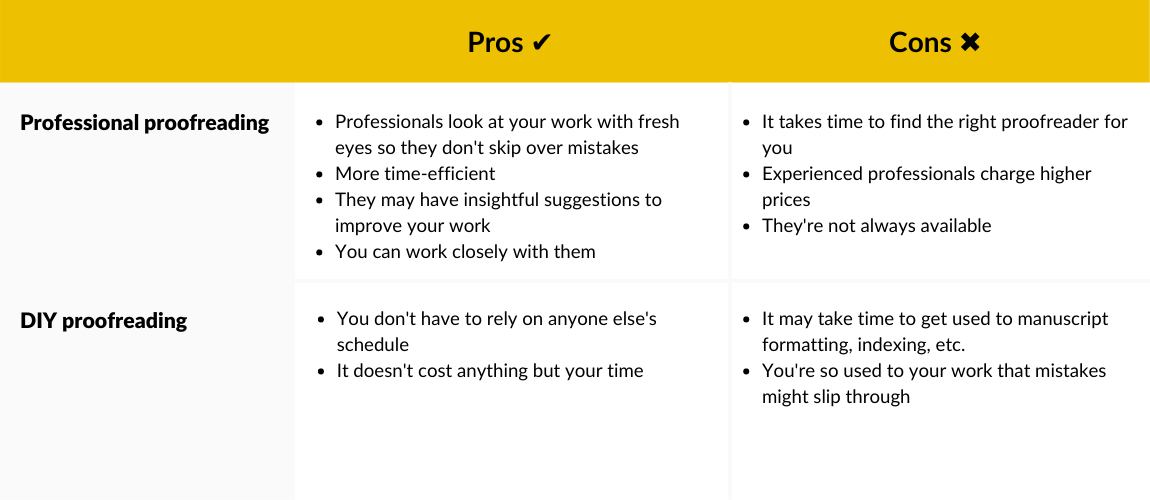
Outside of trade publishing, proofreaders will often find work in areas such as academia, journalism, and even advertising . In some corporate settings, they can even be hired to check through slide decks before presentations.
How much does a professional proofreader cost?
Based on statistics from Reedsy’s marketplace , proofreading services cost $10 per thousand words, on average.
Of course, this is only a ballpark figure and the final rate will depend on a number of other factors. For example, if the proofreader needs to cross-check the index, this would naturally escalate the cost.
In non-publishing industries, costs may also vary. A proofreader with a deep background in technical writing may choose to charge extra for their expertise and fact-checking, for example. But whatever the cost, you can be sure that getting a professional proofreader is worth it.
Tips for finding a professional proofreader
There are a lot of proofreaders advertising their services out there — where do you begin to find the right one for your project? We’ve got some pointers down below.
- Ask your editor. If you’re already working with an editor, it’s worth asking if they offer proofreading services. If not, they probably know other professionals that they trust will be good for your project.
- Specify your preferences. Do you like to work digitally or do you focus better reading a printed manuscript? The proofreading process is a two-way street, and when both you and the professional agree on a method, everything will be much smoother and more efficient.
- Search niche marketplaces. If you’re writing a book, it’s better to go straight to editing societies' directories or publishing marketplaces, where the proofreaders’ credentials are checked, than to browse Upwork or Fiverr. That way you don't have to spend hours sifting through portfolios of proofreaders who aren't equipped with the right knowledge to advise you, not just on your writing but also on formatting your manuscript.

Polish your book with a professional
Meet Neil Gaiman's, George R. R. Martin's, and George W. Bush's editors and proofreaders at Reedsy
Learn how Reedsy can help you craft a beautiful book.
Proofreading your own work

When it comes to a longer piece of writing meant for wider consumption — like, say, a book — there’s still nothing that can beat a trained professional.
For other types of content, however, writers can and do proofread their own work. Simply reading back something you’ve written will usually reveal typos and ungainly passages. In situations where your writing isn’t intended for a massive audience (for example, in an email to your boss), you can usually rely on an online spelling and grammar checker such as Grammarly to catch any major mistakes.
Let’s cover a couple of DIY proofreading tips to help you ensure your work is as polished as can be.
Proofreading tips
- Start with self-awareness . There are certain bad grammatical habits we’re all prone to, or particular typos that tend to crop up frequently in our work. Before you get started, take a moment to determine your own "bad writing habits." Then do a sweep of your work, concentrating just on those. For example, perhaps there's a word you know you overuse? Search for just that word and really consider whether it needs to be there.
- Read out loud. The truth is, your eyes can deceive you — and this is especially true if you're reading on a screen, where your eyes are quick to tire. You'd be surprised at how many mistakes you can spot reading something out loud vs. reading it silently in your head. A bonus tip here is to read your manuscript out loud with someone else. Take turns reading a set number of pages each, and you'll ensure you catch any awkward-sounding phrases.
- Do one thing at a time. The worst way to proofread your own work is to read through it and try to get it perfect by the end. Effective proofreading requires multiple rounds, and each round should be focused on just one task. Don't look for spelling errors at the same time as you check for homonyms, as you'll likely end up letting stuff fall through the cracks.
Looking for a proofreader? Sign up for a free Reedsy account and browse through the best freelancers in the business.
Andrew Knight New Canaan says:
16/05/2019 – 06:34
Awesome Post. I really like it. This is a very informative post. Thanks for sharing with us. I would like to share with my friends.
Comments are currently closed.
Continue reading
Recommended posts from the Reedsy Blog
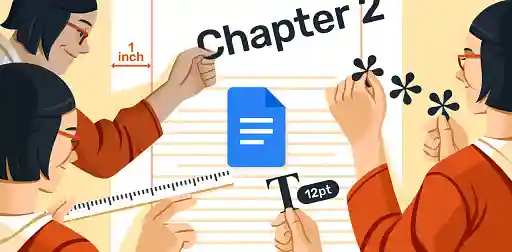
How to Format a Book in Google Docs in 7 Simple Steps
While there are much better alternatives, here's how you can format a book in Google's popular writing app.

The 6 Best Ghostwriting Companies to Write Your Book
Learn which companies you can trust if you want to find a ghostwriter to write your next book.

How to Publish a Book For Free: The 7 Best Sites
If you want to publish your book without spending a single dime, check out this handy list of 7 free self-publishing services.

5 Ways to Save on Your Self-Publishing Budget
If you want to self-publish a book without breaking the bank, here are 5 tips to ensure you still get the best result possible.

30 Great Book Dedication Examples to Inspire Your Own
A list of 30 of the best book dedications in the business that'll have you crying, laughing, and crying laughing.

Expository Writing: The Craft of Sharing Information
Expository writing is a fundamental part of how we learn and make sense of the world. Learn all about it in this post.
Join a community of over 1 million authors
Reedsy is more than just a blog. Become a member today to discover how we can help you publish a beautiful book.
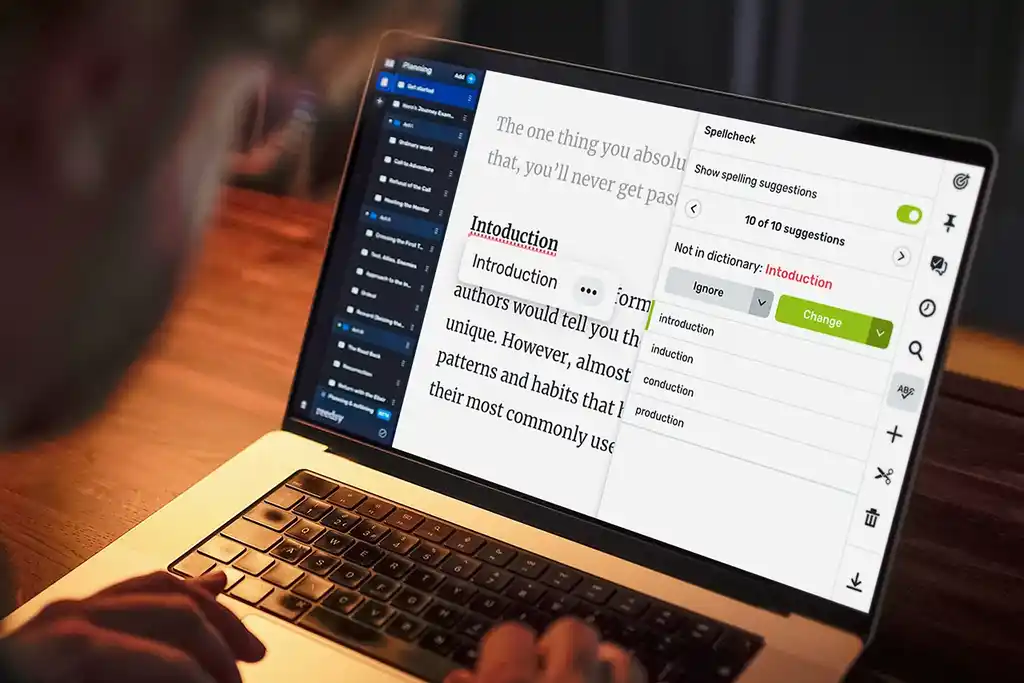
Catch your errors
Polish your writing in Reedsy Studio, 100% free.

1 million authors trust the professionals on Reedsy. Come meet them.
Enter your email or get started with a social account:
Still have questions? Leave a comment
Add Comment
Checklist: Dissertation Proposal
Enter your email id to get the downloadable right in your inbox!
Examples: Edited Papers
Need editing and proofreading services, what is proofreading importance, tips, costs, and examples.

- Tags: Academic Proofreading , Book Proofreading , dissertation proofreading , Proofreading
Have you ever wondered why some texts seem clearer and more professional than others? The secret lies in proofreading. Proofreading elevates your content by eliminating errors and flaws.
Whether it’s a novel , a business report, an academic paper , or even a simple email , proofreading can significantly elevate the quality of your documents. In this comprehensive guide, we’ll explore what proofreading is, why it’s important, and provide you with actionable tips and insights to perfect your proofreading skills.
Get professional proofreading for your document! Learn more
So, let’s dive into the world where every comma counts and every word matters, beginning with an easy proofreading definition!
What is proofreading?
Proofreading is the final check of a text or content before it’s submitted. Proofreading is the process of reviewing the final draft of a text to ensure that all surface errors concerning grammar, punctuation , spelling, and formatting are corrected.
Think of proofreading as giving your writing a final shine to make sure it doesn’t have any mistakes. The key to understanding proofreading meaning is recognizing that it differs from editing , which involves more significant changes like restructuring and style adjustments.
Even though you’re document might have undergone copy editing or developmental editing , proofreading is your last chance to check for errors!
After understanding what is proofreading, we’ll move on to see why is proofreading important and whether is it really required.
Why is proofreading important?
Here are 5 reasons why proofreading is important and why you should do it:
1. Proofreading helps you catch mistakes like spelling errors or missing words so your writing is clear and easy to understand.
2. When you proofread your work, it shows that you take pride in what you’ve written and want to make sure it’s the best it can be.
3. Proofreading helps prevent silly mistakes that could make you look bad in front of others, like a teacher or a boss.
4. By fixing errors, proofreading ensures that your message is communicated accurately without any confusion.
5. With proofreading, you know your writing is error-free, and you feel more confident about sharing it with others, whether it’s for school, work, or fun.
Types of proofreading
Several types of proofreading cater to different needs:
Academic proofreading
It focuses on proofreading essays , theses , and academic publications, ensuring they meet the required scholarly standards. This type of proofreading also checks for consistency in argumentation and the correct use of academic citation styles, which are crucial for maintaining academic credibility.
Business proofreading
This type enhances the quality of business documents such as reports, business proposals , and presentations. It ensures consistent use of capitalization, abbreviations, formatting, and terminology throughout the document.
Creative proofreading
Tailored for novels, poems , and plays, creative proofreading focuses on flow, punctuation, and the finer nuances of creative writing. It also respects the author’s stylistic choices while ensuring that the text remains engaging and accessible to the reader.
Technical proofreading
It ensures accuracy in documents with specialized content, such as technical manuals and research papers . This process involves a meticulous review of technical terms and data to prevent any misinterpretation that could result from unclear or incorrect information.
10 Proofreading tips for clear and error-free writing
Here are some practical tips to help you proofread more effectively:
1. Take a break before proofreading
After you finish writing, take a break. When you’ve been closely involved with a text, it’s easy to see what you intend to write rather than what you actually wrote. Stepping away from your work for a few hours, or even a day, helps you return with a fresh perspective.
2. Print out your work
Sometimes, changing the medium can help spot mistakes. Print out your document and go through it on paper instead of on a screen. This change can help you catch errors that you might overlook when reading digitally.
3. Read aloud
Reading your text aloud is remarkably effective. It forces you to slow down and lets you hear how your words sound together. You’ll catch not just typos and grammatical mistakes but also awkward phrasings and unclear sentences.
4. Use a ruler or finger to guide your eyes
Place a ruler under each line as you read, or use your finger to point at each word. This technique helps maintain your focus and reduces the chance of skipping over potential errors.
5. Check for one type of error at a time
If you try to identify every type of mistake in one go, you might miss more than you catch. Focus on one problem at a time—start with spelling, then check grammar, punctuation, and finally formatting. This segmented approach ensures thoroughness.
6. Watch out for homophones
Homophones are words that sound alike but have different meanings, such as “there,” “their,” and “they’re.” Spell check might not catch these, so pay extra attention to them.
7. Be wary of punctuation
Punctuation errors can be subtle. Pay special attention to the use of commas, semicolons, colons, and apostrophes. Misplaced punctuation can change the meaning of a sentence dramatically.
8. Double-check names, numbers, and dates
Factual accuracy is crucial. Verify the spelling of names, the accuracy of numbers, and the correctness of dates. For professional documents, even a small mistake can create a bad impression.
9. Use proofreading tools wisely
Proofreading tools like Grammarly or Microsoft Word ’s spell checker are helpful, but they’re not infallible. Use these tools to help identify obvious errors, but rely on your judgment for the final check.
10. Ask someone else to proofread
A fresh pair of eyes can catch errors you might have missed. If possible, have another person read your work. They might find mistakes you overlooked and can give you feedback on the clarity of your writing.
Proofreading examples
1. your vs. you’re.
Sentence: Your going to love the new updates.
Proofread and corrected: You’re going to love the new updates.
Explanation: “ Your ” is a possessive adjective, used to show ownership. “ You’re ” is a contraction for “you are.” This sentence requires “You’re” to convey the meaning “you are going to love,” indicating an action that is expected to happen.
2. Its vs. It’s
Sentence : Its important to check if it’s features work correctly.
Proofread and corrected: It’s important to check if its features work correctly.
Explanation: “ It’s ” is a contraction of “it is” or “it has”, and “ its ” is a possessive pronoun. In this sentence, “It’s” is needed as a contraction of “it is important,” and “its” is used to indicate possession of “features.”
3. Missing comma in a compound sentence
Sentence : I finished the report but he has not reviewed it yet.
Proofread and corrected : I finished the report, but he has not reviewed it yet.
Explanation: A comma is needed before “but” in a compound sentence. It separates two independent clauses, making the sentence easier to read and understand.

4. Incorrect punctuation with direct speech
Sentence: “How are you doing today” he asked.
Proofread and corrected : “How are you doing today?” he asked.
Explanation: The dialogue within the quotation marks is a question and should end with a question mark.
5. Misused apostrophe for plurals
Sentence: The company’s new policy’s affect all employee’s.
Proofread and corrected: The company’s new policies affect all employees.
Explanation: “Policies” is the plural form of “policy” and does not need an apostrophe. “Employees” is the plural of “employee” and also does not need an apostrophe. However, “company’s” correctly uses an apostrophe to show possession of the new policies.
How much does proofreading cost?
Proofreading costs can vary widely depending on the length of the text, its complexity, and the turnaround time required. Generally, proofreaders charge by the word, ranging from $0.01 to $0.05 per word. It will also depend on the complexity of the text and the proofreader’s expertise.
How long does proofreading take?
The time required for proofreading can depend on several factors, including the length of the document and the number of corrections needed. On average, a professional proofreader can proofread about 2000-3000 words per hour.
How to select the best proofreading service?
To select the best proofreading service , follow these brief steps:
1. Define your needs: Identify the type of document and specific proofreading requirements you have. Outline requirements such as attention to style guides or technical terminology.
2. Research options: Search for services with positive reviews and relevant expertise. Use platforms like Google, Yelp, and LinkedIn to find proofreading services with high ratings and positive client testimonials.
3. Check qualifications: Ensure the proofreaders have the appropriate skills and experience, especially for specialized content. For specialized content, such as medical or legal documents, look for proofreaders with specific expertise in those fields.
4. Evaluate samples: Review sample work to assess the quality of their proofreading. Request or download sample proofread documents from the service’s website to evaluate their attention to detail, ability to catch errors, and overall quality of work.
5. Consider communication: Choose a service that offers good customer support and clear communication channels. Contact the service to gauge their responsiveness and professionalism.
6. Review security: Make sure the service has strong confidentiality and security measures. Inquire about their data protection policies and whether they sign nondisclosure agreements.
7. Compare prices: Look at the pricing structure and ensure it fits your budget while providing value. Be wary of prices that seem too low as they may reflect poor quality, but also ensure you aren’t overpaying for basic services.
8. Check guarantees: Opt for services that offer revisions and satisfaction guarantees. This indicates confidence in their quality and commitment to customer satisfaction.
9. Assess turnaround times: Ensure the service can meet your deadlines. Quick turnaround times shouldn’t compromise the quality of the proofreading.
A company that has all these benefits and provides exceptional proofreading services is PaperTrue. We provide expert editing and proofreading services and our team of experienced proofreaders ensures perfection.
With our quick turnaround times, competitive pricing, and satisfaction guarantee, you can trust PaperTrue to elevate your writing!
Keep reading for more useful resources:
- Novel Proofreading | Definition, Significance & Standard Rates
- Manuscript Proofreading | Definition, Process & Standard Rates
- Screenplay Proofreading: Importance, Process, & Cost
- Script Proofreading: Rates, Process, & Proofreading Tips
- Research Paper Proofreading | Definition, Significance & Standard Rates
Frequently Asked Questions
What should you look for in a good proofreader, can software replace human proofreaders, how much does professional proofreading cost.
Found this article helpful?
Leave a Comment: Cancel reply
Your email address will not be published.
Your vs. You’re: When to Use Your and You’re
Your organization needs a technical editor: here’s why, your guide to the best ebook readers in 2024, writing for the web: 7 expert tips for web content writing.
Subscribe to our Newsletter
Get carefully curated resources about writing, editing, and publishing in the comfort of your inbox.
How to Copyright Your Book?
If you’ve thought about copyrighting your book, you’re on the right path.
© 2024 All rights reserved
- Terms of service
- Privacy policy
- Self Publishing Guide
- Pre-Publishing Steps
- Fiction Writing Tips
- Traditional Publishing
- Additional Resources
- Dissertation Writing Guide
- Essay Writing Guide
- Academic Writing and Publishing
- Citation and Referencing
- Partner with us
- Annual report
- Website content
- Marketing material
- Job Applicant
- Cover letter
- Resource Center
- Case studies
Encyclopedia
Writing with artificial intelligence.
Proofreading
- © 2023 by Joseph M. Moxley - Professor of English - USF
Proofreading refers to a step in the writing process --the act of critically reading a document with the goal of identifying errors at the word and sentence-level. Proofreading is crucial to establishing a professional tone in school and workplace contexts . Learn how to edit documents so that your works meet the needs and expectations of your readers.
What is Proofreading
Proofreading refers to a step in the writing process–the process of rereading a document with the goal of identifying word and sentence-level errors .
Synonymous Terms
The terms proofreading , editing , and revision , and may be used interchangeably by some people. However, subject matter experts in writing studies make distinctions between these intellectual strategies by noting their different foci:
a focus on the big picture – the global perspective.
- Content Development
- Organization
- Rhetorical Stance
a focus on line-by-line editing – the local perspective
a focus on a last chance to catch any errors
- Final check for errors
Proofreading may also be referred to as correcting or copy editing.
Related Concepts: Global Perspective ; Local Perspective ; Proofreading ; Revision ; Structured Revision; Styles of Writing
Why Does Proofreading Matter?
As noted for editing , proofreading is critical to establishing a professional tone in academic writing and workplace writing.
Have you ever sent off an email message or submitted a school paper only to later discover that it was full of typographical errors? How could you have missed all of these errors?
The answer seems to have something to do with how our brains work. Our brains recognize patterns. This is part of the reason why people who read frequently tend to read faster than infrequent readers: their brains more speedily recognize and process patterns of words on the page.
Texts that we write ourselves are the texts that we can read fastest of all, because our brains are already deeply familiar with the patterns of our words.
But what helps us as readers can hurt us as writers. When we read our own work, our brains tend to quickly see the patterns that we put on the page rather than the individual words. We see what we meant to write, and not necessarily what we actually wrote.
To our readers, however, who are not as familiar with our words, the errors are more apparent—and they detract from our credibility as authors.
To proofread effectively, we need to distance ourselves from the text and see it as our readers will see it.
How to Proofread
The little changes that you make during editing and proofreading can have a profound and disproportionate effect on your target reader’s experience interpretation of your document.
The following techniques can help you critically evaluate your document at the sentence level:
- After working hard to develop the substance of a message, you may be weary of it and eager to turn it over to your instructor. If possible, however, you are wise to set the draft aside and work on another task before trying to edit it. For example, try editing after you first wake up, then after lunch, and then before dinner. Are you surprised that you can keep finding ways to improve the document?
- It has become commonplace for postsecondary writing instructors in the U.S. to suggest that writers not worry about proofreading during the early stages of a writing project. This can be sound advice because time spent proofreading could be wasted if what you’re editing doesn’t respond to the demands of the school assignment or isn’t rhetorically sensitive. Plus, why edit a freewrite when the goal during freewriting is to develop ideas?
- Try reading your document backwards: Begin with the last sentence and move upward toward the introduction
- Place sheets of paper above and below each sentence in the document as you read through it
- Place slashes between each sentence and then evaluate each one separately
- If you are using a personal computer, try printing the document with a different font, such as size 14 or size 10 point instead of the normal size 12.
- Look for mistakes to cluster. When you find one error in paragraph seven, for example, carefully examine the surrounding sentences to see if you had a lapse of concentration when you wrote and copyedited that section.
- Look for errors that you often make, such as sentence fragments or subject-verb agreement.

Brevity - Say More with Less

Clarity (in Speech and Writing)

Coherence - How to Achieve Coherence in Writing

Flow - How to Create Flow in Writing

Inclusivity - Inclusive Language

The Elements of Style - The DNA of Powerful Writing

Recommended

Academic Writing – How to Write for the Academic Community

Structured Revision – How to Revise Your Work

Professional Writing – How to Write for the Professional World

Credibility & Authority – How to Be Credible & Authoritative in Research, Speech & Writing

Citation Guide – Learn How to Cite Sources in Academic and Professional Writing

Page Design – How to Design Messages for Maximum Impact
Suggested edits.
- Please select the purpose of your message. * - Corrections, Typos, or Edits Technical Support/Problems using the site Advertising with Writing Commons Copyright Issues I am contacting you about something else
- Your full name
- Your email address *
- Page URL needing edits *
- Email This field is for validation purposes and should be left unchanged.
Other Topics:

Citation - Definition - Introduction to Citation in Academic & Professional Writing
- Joseph M. Moxley
Explore the different ways to cite sources in academic and professional writing, including in-text (Parenthetical), numerical, and note citations.

Collaboration - What is the Role of Collaboration in Academic & Professional Writing?
Collaboration refers to the act of working with others or AI to solve problems, coauthor texts, and develop products and services. Collaboration is a highly prized workplace competency in academic...

Genre may reference a type of writing, art, or musical composition; socially-agreed upon expectations about how writers and speakers should respond to particular rhetorical situations; the cultural values; the epistemological assumptions...

Grammar refers to the rules that inform how people and discourse communities use language (e.g., written or spoken English, body language, or visual language) to communicate. Learn about the rhetorical...

Information Literacy - Discerning Quality Information from Noise
Information Literacy refers to the competencies associated with locating, evaluating, using, and archiving information. In order to thrive, much less survive in a global information economy — an economy where information functions as a...

Mindset refers to a person or community’s way of feeling, thinking, and acting about a topic. The mindsets you hold, consciously or subconsciously, shape how you feel, think, and act–and...

Rhetoric: Exploring Its Definition and Impact on Modern Communication
Learn about rhetoric and rhetorical practices (e.g., rhetorical analysis, rhetorical reasoning, rhetorical situation, and rhetorical stance) so that you can strategically manage how you compose and subsequently produce a text...

Style, most simply, refers to how you say something as opposed to what you say. The style of your writing matters because audiences are unlikely to read your work or...

The Writing Process - Research on Composing
The writing process refers to everything you do in order to complete a writing project. Over the last six decades, researchers have studied and theorized about how writers go about...

Writing Studies
Writing studies refers to an interdisciplinary community of scholars and researchers who study writing. Writing studies also refers to an academic, interdisciplinary discipline – a subject of study. Students in...
Featured Articles

We Trust in Human Precision
20,000+ Professional Language Experts Ready to Help. Expertise in a variety of Niches.
API Solutions
- API Pricing
- Cost estimate
- Customer loyalty program
- Educational Discount
- Non-Profit Discount
- Green Initiative Discount1
Value-Driven Pricing
Unmatched expertise at affordable rates tailored for your needs. Our services empower you to boost your productivity.
- Special Discounts
- Enterprise transcription solutions
- Enterprise translation solutions
- Transcription/Caption API
- AI Transcription Proofreading API
Trusted by Global Leaders
GoTranscript is the chosen service for top media organizations, universities, and Fortune 50 companies.
GoTranscript
One of the Largest Online Transcription and Translation Agencies in the World. Founded in 2005.

The Importance of Proofreading: Why It Matters for Your Writing

Producing error-free and polished content is essential for effective communication; this is where proofreading plays a crucial role. Proofreading ensures you convey your message accurately and professionally, whether you're writing an academic essay, a business proposal, or even a casual email.
This article explores the proofreading meaning, the processes involved, various types, and most importantly, why proofreading is of utmost importance for any form of written communication.
The Definition of Proofreading
Proofreading, in simple terms, refers to carefully examining a written document to detect and correct spelling, grammar, punctuation, and formatting errors. It involves a thorough review of the content to ensure accuracy and consistency. The proofreading process typically involves the following:
Reading the text multiple times.
Paying attention to details.
Using tools such as proofreading checkers to identify mistakes.
There are several types of proofreading, depending on the context and purpose. For example, transcript proofreading involves checking transcripts against the original audio or video files for accuracy. On the other hand, translation proofreading focuses on reviewing translated texts to ensure the intended meaning is preserved and no errors occur during the translation process.
How Proofreading Is Done
To effectively proofread your writing, start by taking a break before reviewing the content. Doing this will help you approach the text with fresh eyes. Read the document slowly and carefully, paying attention to each word and sentence. Use a proofreading checker or grammar tools to identify common errors automatically.
Reading the text aloud is also beneficial, as it helps identify awkward phrasing or inconsistencies. Finally, consider seeking the assistance of a second pair of eyes, as another person may catch errors you may have missed.
The Benefits of Proofreading
The benefits of proofreading are numerous and far-reaching. Firstly, it helps in maintaining the credibility and professionalism of your writing. A well-proofread document reflects your attention to detail and demonstrates your commitment to delivering high-quality work.
Proofreading improves clarity and coherence, ensuring your message is understood as intended. It eliminates potential confusion caused by grammar or spelling errors, making your writing more compelling and persuasive.
To understand the significance of proofreading, let's explore some proofreading examples with common errors that can easily slip through without a careful review.
Typos like “form” instead of “from” can alter the meaning of a sentence entirely.
Grammatical mistakes, such as subject-verb agreement errors or incorrect verb tenses, can also undermine the clarity and coherence of your writing, e.g., “one of my classmates sleeps in class” instead of “one of my classmates sleep in class.”
Punctuation errors can lead to misinterpretation or ambiguity, e.g., Sarah's house instead of Sarahs’ house. Proofreading helps catch these errors and ensures a polished final product.
The Importance of Proofreading
So what is the importance of proofreading? It enhances the accuracy and professionalism of your writing. By eliminating errors, you establish yourself as a competent and reliable writer, which is particularly crucial in academic, business, or professional settings.
While proofreading, you can identify areas where your arguments or ideas may be unclear or disjointed. This allows you to reorganize and refine your content, ensuring a logical progression that engages your readers effectively.
Proofreading is a critical step in the writing process that should never be overlooked. It ensures accuracy, clarity, and professionalism in your work, contributing to effective communication and a positive impression on your audience. Furthermore, proofreading goes beyond mere error correction. It also involves examining the overall structure and flow of your writing.
Proofreading allows you to polish your writing and enhance its impact, ultimately making it more engaging, persuasive, and enjoyable for your audience to read. Once you understand the benefits of proofreading to your business, the quality of your writing will improve significantly. So, before hitting that "send" button, proofread your work!
- Research Process
- Manuscript Preparation
- Manuscript Review
- Publication Process
- Publication Recognition
- Language Editing Services
- Translation Services

What is the main purpose of proofreading a paper?
- 4 minute read
Table of Contents
It’s commonplace to feel nervous about submitting your scientific work. Whether you’re concerned about meeting research reviewers’ high expectations and/or the target journals’ guidelines. Proofreading is the final stage before a manuscript leaves your hands and enters the expanding universe of appraisal for publication. So, it makes sense that you want to deliver a perfectly written document, and avoid embarrassing mistakes.
Most of us simply have either friends or colleagues proofread our work, but they may have their own limitations regarding proficiency in text writing. Instead, it’s highly advised that you look for professional help at this important stage.
The main purpose of proofreading is to improve the quality of the paper, ensuring there are no lingering mistakes, and correcting generalized discourse errors or writing inconsistencies. Essentially, you want to make sure you have a well-defined communication goal. Analyzing whether the content is properly conveyed, and the sentences are syntactically and grammatically well-written, are just two of the basic tasks to achieve publication-ready work. Specifically, a perfect manuscript, ready to be published in the most recognized scientific journals.
What is proofreading
Proofreading is the last writing process before the author submits the article for publication. It is the stage of verification, by the author him or herself, or by another person. Thus, it is not only important to check grammar and spelling, it is also highly advised to ensure that the idea of the writer/author is in agreement with what he or she wants to communicate with the audience. In other words, that the article/work is clearly written for its intended target audience.
Proofreading Vs. Editing
| Proofreading | Editing |
|---|---|
| Language formatting for consistency; | Improves the overall quality of the text; |
| Writing improvement; | Improves any language issues, in accordance with the purpose of the text; |
| Grammar, spelling and typing mistakes elimination; | Clarification of expressions; |
| Ensures a document is ready for publication; | Removal of errors and inconsistencies; |
| Cheaper than editing. | Maximization of the impact of discourse, particularly on objectivity and assertiveness. |
Paper Proofreader
How often have you conducted high-quality research, but the article about that research didn’t match the quality of the research itself? How many times have you regretted missing a mistake that ultimately led to a failed submission?
Proofreading ensures flawless content for publication, increasing your chances of success. An excellent paper proofreader checks all digital sources related to the document, including websites, email addresses, etc.
A good paper proofreader is someone who will take care of your work as if it were his or her own and, in addition to correcting grammar errors, also detects the possibility of scientific plagiarism. Proofreading your scientific article using scientific editing will save you from the humiliation of having your article rejected by scientific journals due to grammatical errors or inadequate language.
Why is proofreading important?
Effective proofreading is absolutely essential for producing high-quality documents, whether academic or professional. When done clearly, correctly and thoroughly, proofreading can be the difference between writing something that communicates as it is supposed to or a huge misunderstanding. It can also be the difference between acceptance and rejection in a distinguished journal. No author creates an excellent text without reviewing, reflecting, and revising – or trusting someone to do so – before the final version of their manuscript is complete and submitted.
Language and text reviewing are important to detect:
- Grammar mistakes and numbering errors – e.g. forms of numbers, short and scientific forms, degrees of comparison, etc.
- Spelling mistakes – simple misspellings, or incorrect use of a homonym (words that sound alike, but have different meanings, e.g. “read,” for “red”), typographical error, etc.
- Inconsistency in the document format – this can be simple font, spacing and justification rules, or standard format for the applicable research sub-type (e.g. research review versus experiment)
- Punctuation errors – missing or extra commas, periods, and/or quotation marks used incorrectly
- Misplaced words – correct word choice improves the quality of your content
- Poorly structured paragraphs
- Errors in sentence structure
Whatever the nature of your research, Elsevier will be glad to give you a hand in reviewing and amending your manuscript. Professional editors can proofread your document so the final product is well-written, precise, and easy to read. With Elsevier’s medical editing and proofreading services team, we can help you with grammar, syntax, spelling, and punctuation; maximizing impact, and increasing your chances of publication.
Language Editing Services by Elsevier Author Services:
Find more about our Language Editing Standard : completion within 7 business days; editing by native speakers in (scientific) American or British English; PhD or PhD candidates selection according to your field of study and an exclusive guarantee: free re-edit or your money back.

Types of Scientific Articles

Navigating the Research Landscape: A Deep Dive into the FINER Method
You may also like.

Essential for High-Quality Paper Editing: Three Tips to Efficient Spellchecks

If You’re a Researcher, Remember These Before You Are Submitting Your Manuscript to Journals!

Navigating “Chinglish” Errors in Academic English Writing

Is The Use of AI in Manuscript Editing Feasible? Here’s Three Tips to Steer Clear of Potential Issues

A profound editing experience with English-speaking experts: Elsevier Language Services to learn more!
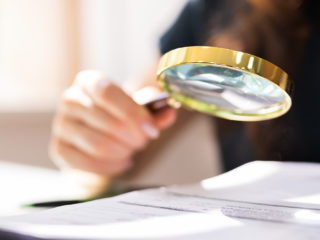
Research Fraud: Falsification and Fabrication in Research Data

Professor Anselmo Paiva: Using Computer Vision to Tackle Medical Issues with a Little Help from Elsevier Author Services

Systematic Review VS Meta-Analysis
Input your search keywords and press Enter.
How Proofreading Can Drastically Improve Your Writing
#scribendiinc
Written by Chandra Clarke
Proofreading a paper before you turn it in can mean the difference between an unacceptable essay and one that will be praised and rewarded with an excellent grade. Too often, however, students skip this crucial step when writing.
Proofreading a paper is just as important as any other aspect of writing; in fact, the process is instrumental in getting your ideas across in an accessible and logical manner.
Before You Proofread
Before performing a final proofread, it's important to do an in-depth edit. Editing your paper allows you to examine how your ideas connect with each other in terms of organization, development, and focus.
If a particular argument or fact would be better suited for another section of your paper, you can rearrange the content so that similar ideas are presented in the same paragraph or in proximity to each other. This extra considersation can give your paper more order.
Also, take the time to rewrite or revise any part of your paper that you're unsatisfied with or that you think could be written more convincingly. Editing allows you to identify areas that could be supported by more facts or better arguments. Add more content as you see fit, as long as it's relevant and within word limit restrictions.
Save newer versions of your work as separate files so that you'll have a record of your drafts and a point of reference if you decide to revisit certain ideas. Once your paper's content and flow are the best they can be, you can dive into proofreading, which includes looking for errors in punctuation, spelling, grammar, and word choice.
The Benefits of Proofreading
Performing a thorough proofread of your work will give you the chance to fix any errors that remain and that may cloud your intended meaning. Though many computers and word processors offer spell-checkers, they cannot catch tricky and commonly misused words, such as homophones, the way that you can if you proofread and give your paper a word-by-word review.
Grammar mistakes can also be caught and fixed, especially when reading your work aloud. Since misplaced punctuation can change the entire meaning of a sentence, it's also important to ensure that these little marks have been expertly employed.
Good spelling, grammar, and punctuation are extremely important; it's not uncommon for some teachers to mark down a paper an entire letter grade if it's obvious that it hasn't been properly proofread .
Address every error, no matter how big or small. You should minimize the potential for misunderstanding by choosing the right words to communicate your ideas. Never underestimate the importance of clarity; when faced with the choice to use a big, vague word or a short, clear one, always choose the latter.
During the editing process, academic papers or theses that are highly dependent on research need to have their sources vetted for accuracy and legitimacy. Verify that your paper is based on credible information. Then, in the proofreading stage, check your citations and footnotes to ensure their proper placement and formatting.
Proofreading Tips
Certain strategies can serve you well when it comes to proofreading. Putting your paper aside for a bit can help you look at your work with fresh eyes when you decide to review it. You can also read your paper from the conclusion to the introduction to give yourself a new perspective.
If you're writing a paper that has to be presented in a certain style, such as Modern Language Association (MLA) style, it's a good idea to have others who are familiar with that style review your paper to see if it meets the prescribed standards. They may be able to identify mistakes that you missed, especially if your familiarity with MLA style is limited.
Get crafty with your proofreading techniques to ensure that you're handing in an impressive paper. Here are three practical proofreading tactics:
- Consider printing out your work or altering the document formatting; this can help you view your work as if it were written by a classmate.
- Place a separate piece of paper over your work to block out unread pieces of text while you proofread each line to help you concentrate on each word of your paper individually.
- If you or your teachers have identified certain weaknesses in your writing, review your work with the goal of addressing those areas. For example, writers who find punctuation problematic can print out their papers and highlight or circle punctuation marks to determine if they're both necessary and appropriate.
Additional Resources
To learn even more about proofreading, visit the following links:
- Where to Begin When Proofreading
- Editing and Proofreading
- How to Proofread
- General Strategies for Editing and Proofreading
- Revising vs. Proofreading: What's the Difference?
- College Writing Center Proofreading Tips (PDF)
- Editing and Proofreading Strategies
- Revision and Proofreading: How to Revise Your Own Writing (PDF)
- Revision Strategies
About the Author

Image source: Prawny/Pixabay.com
Polish Your Writing with a Professional Proofreader
Try our academic proofreading service , or get a free sample.
Have You Read?
"The Complete Beginner's Guide to Academic Writing"
Related Posts

Active and Passive Voice
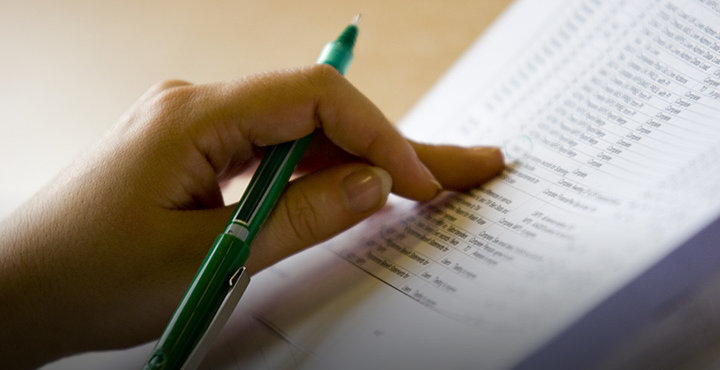
Proofreading Marks: What Do They Mean?

What Is Proofreading? Everything You Need to Know about Having Your Work Proofread
Upload your file(s) so we can calculate your word count, or enter your word count manually.
We will also recommend a service based on the file(s) you upload.
| File | Word Count | Include in Price? |
|---|
English is not my first language. I need English editing and proofreading so that I sound like a native speaker.
I need to have my journal article, dissertation, or term paper edited and proofread, or I need help with an admissions essay or proposal.
I have a novel, manuscript, play, or ebook. I need editing, copy editing, proofreading, a critique of my work, or a query package.
I need editing and proofreading for my white papers, reports, manuals, press releases, marketing materials, and other business documents.
I need to have my essay, project, assignment, or term paper edited and proofread.
I want to sound professional and to get hired. I have a resume, letter, email, or personal document that I need to have edited and proofread.
Prices include your personal % discount.
Prices include % sales tax ( ).


What Is Academic Proofreading? (+ Why It’s Important!)
This article may contain affiliate links. Please see our affiliate disclaimer in the footer menu for more information. Thank you for your support!
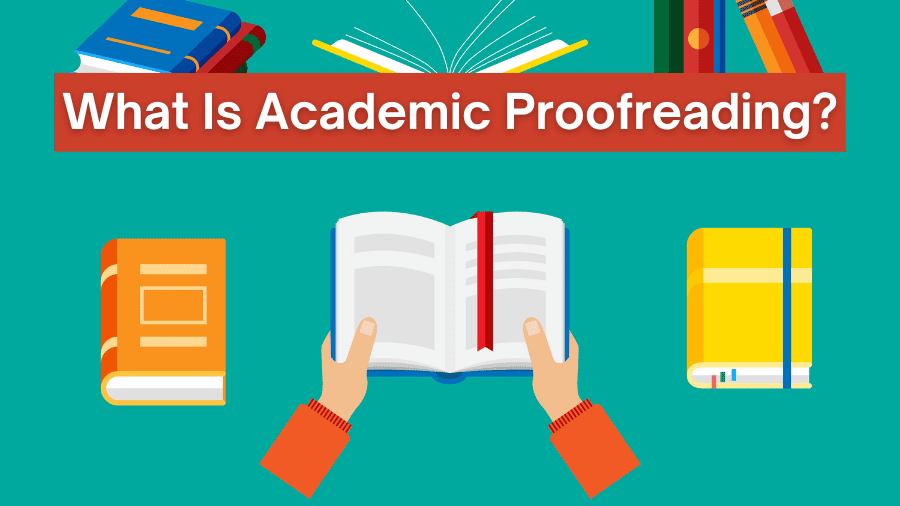
If you participate in academia in any capacity, you may wonder what academic proofreading entails. Given that students, professors, and researchers are responsible for producing a large volume of writing throughout their time in universities, it’s important to consider the role of proofreading. So what exactly is meant by academic proofreading?
Academic proofreading is the proofreading of scholarly documents produced by professors, researchers, and students within colleges and universities. It involves checking these texts for proper grammar, capitalization, spelling, punctuation, and formatting.
Academic proofreading has a few unique considerations compared to other kinds of proofreading .
Let’s discover more about this type of proofreading, including its vital role in the writing process. Then we’ll find out how you can best proofread your scholarly documents to ensure readers focus on your ideas and conclusions instead of getting caught up in a web of errors.
Table of Contents
What Is Academic Proofreading?
As we know, academic proofreading is the proofreading of academic texts.
Proofreading is the last step in the four-step editorial process. Here’s a look at the four stages of editing:
- developmental editing
- line editing
- copyediting
- proofreading
I penned a post about the particulars of proofreading if you’d like to peruse it. The article discusses proofreading in general.
Academic Editing vs. Academic Proofreading
While editing deals with the big picture elements (organizational structure, clarity, tone, flow, etc.), proofreading addresses the details.
A proofreader will find and correct spelling, grammar, capitalization, punctuation, and formatting mistakes. They’ll also keep an eye out for improper word choices and words that have been repeated or omitted.
Similar to editors, proofreaders rely on the appropriate style guide to ensure the writing conforms to the specified guidelines.
They will also ensure the works-cited page, reference list, or bibliography is formatted correctly.
And an astute proofreader will make sure that all in-text citations have a corresponding source listed at the end of the paper. They’ll also eliminate any sources mentioned in the reference list or works-cited page that aren’t cited in the document.
Let’s see a few significant differences between academic proofreading and editing.
Academic Proofreading vs. Academic Editing
| Academic Editing | Academic Proofreading | |
|---|---|---|
| When It’s Done | on the first draft | on the last draft |
| What It Improves | the big picture | the details |
| Pace of Work | relatively slow (more in-depth) | moves faster than editing |
| Involves Rewriting? | sometimes | no |
| Subject Knowledge Required? | yes | highly preferable but not critical |
| Knowledge of Relevant Style Guide Needed? | yes | yes |
I authored an article about proofreading vs. editing if you’d like to delve into this topic.
Who Performs Academic Proofreading?
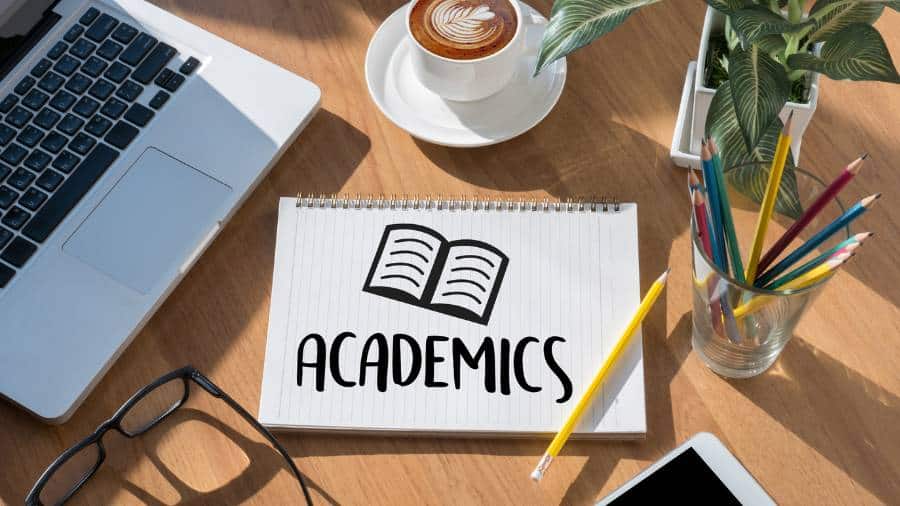
So who does academic proofreading? It depends.
Note: Under most circumstances, it’s okay for undergraduate students to have someone else proofread their work. However, it’s always best to check a university’s academic policy to be sure that all courses allow proofreading!
Although we typically think of academic proofreading as being performed by a professional proofreader, having another set of eyes on one’s work is beneficial—even if those eyes don’t belong to someone who has received formal training.
The proofreading can be done by a colleague or classmate, a friend or family member, or a professional proofreader.
Hiring a professional proofreader with knowledge of the relevant subject will undoubtedly provide the best results; however, this isn’t always feasible.
Let’s see several examples of documents that fall under the umbrella of academic proofreading.
Examples of Scholarly Texts that Need Proofreading
- research papers
- lab reports
- personal statements
- statements of purpose
- college admissions essays
- dissertations
- scholarly journal articles
- research proposals
Now let’s see who can benefit from academic proofreading.
Examples of People Who Need Academic Proofreading
- students applying to colleges
- undergraduate students
- graduate students
- researchers
Now that we know what academic proofreading involves, who does it, the kinds of documents they work on, and who may need it, let’s see why it’s essential.
What Is the Importance of Proofreading in Academic Writing?
Proofreading is essential in all kinds of writing , and academic writing is no exception. Academic texts are often scrutinized by academic publishing companies, admissions committees and professors.
Here are several reasons why academic proofreading is indispensable:
- It improves the chance that a professor’s research will be published.
- Proofreading ensures that a document’s sources are correctly cited and recorded.
- It allows for enhanced clarity and readability of a text.
- Proofreading provides the polish needed to produce high-quality work.
- It gives grad students a stronger thesis or dissertation.
- Proofreading increases the likelihood that students will get into their college of choice.
- It leads to better grades for undergrads.
Proofreading is the final step in the editorial process. Therefore, it’s the last chance to eliminate unsightly blunders that can distract readers and even deter them from comprehending the argument, findings, or message in a piece of scholarly writing.
How Do I Proofread My Academic Paper?

The best way to proofread an academic paper is carefully and methodically. Having a checklist of all the elements (grammar, punctuation, formatting, etc.) you need to review can be helpful. You’ll also want to follow the proofreading strategies that work best for you.
Let’s see some proofreading strategies that are applicable to scholarly documents.
1) Read your writing and hear your writing.
The best advice I can give you for proofreading an academic document is to read it out loud or have your computer read it to you using the Read Aloud function.
You’ve already read several sections of your paper as you composed it. You know what your text is supposed to say, and your eyes will likely read what you think you wrote instead of what you actually wrote.
Relying solely on your eyes while proofreading can lead to many missed mistakes.
To offset this disadvantage we face when proofing our work, we need to get another sense involved: hello, ears!
By hearing your text, you’ll notice mistakes that your eyes will inevitably miss. Of course, we can’t detect every error just by listening. For example, you’ll need your eyes on the screen to pick up punctuation pitfalls.
2) Slow down your reading speed.

When proofing with your eyes, my top tip is to slow down. I know you’re probably used to reading at a quick pace, but with proofreading, you have to pump the breaks!
Did you catch the gaffe in that last sentence, or were you reading fairly fast? It should have said brakes , not breaks .
Reading quickly will lead to overlooked flubs. Then you’ll have to proofread your paper again to catch the errors that escaped your scrutiny.
Since you don’t have time to waste, remember to proofread like a tortoise, not a hare.
3) Alter the text in some way.
To detect more missteps, change the appearance of your document. You can do this by modifying the font’s style, size, or color. You can also divide the text into two columns or increase the space between lines, giving those slipups more room to stand out.
With these changes in place, your brain will perceive reading your paper as a novel experience—increasing the likelihood you’ll find more fumbles.
I think these three tips will help you with proofreading. But if you’d like to learn more, I wrote an article that includes numerous proofreading techniques !
I also wrote a post about the elements to check when proofreading your work . You can use this article as a checklist as you proofread your paper.
Finally, if you need a professional to polish your work, you may want to read my article about the best academic proofreading services .
What Is an Academic Proofreader?
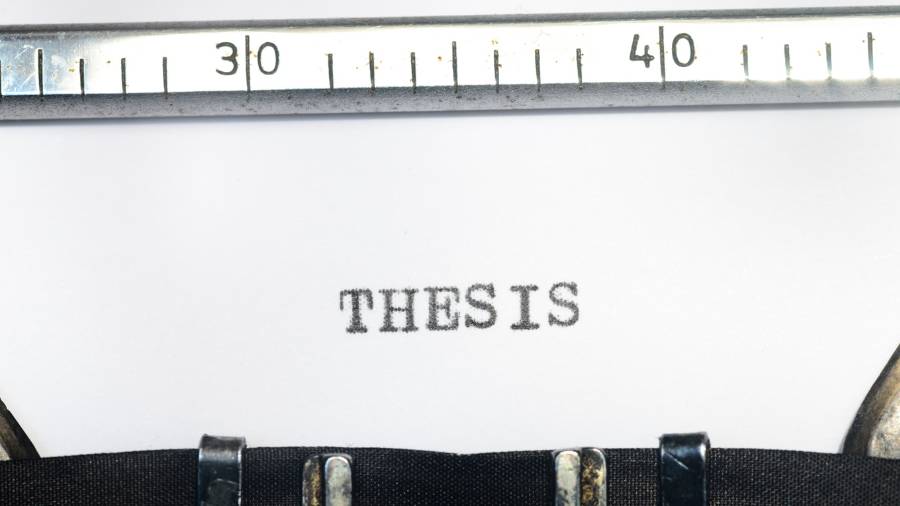
An academic proofreader is a professional who proofreads scholarly works like essays, theses, dissertations, and scholarly journal articles. They review these documents with a fine-tooth comb to locate and correct punctuation, grammar, capitalization, spelling, and formatting mistakes.
Academic proofreaders need to be familiar with at least one of the major style guides used in academic proofreading:
- The Chicago Manual of Style (for the humanities, especially history)
- the MLA (Modern Language Association) Handbook (for the humanities, especially literature)
- the Publication Manual of the American Psychological Association (for behavioral and social sciences)
They must also be well-acquainted with how to format elements like in-text citations, endnotes, footnotes, and quotations according to the relevant style guide.
The guide will also provide them with the requirements for formatting pages containing the list of sources that were consulted/used in a paper.
Finally, academic proofreaders need a wide range of knowledge to sufficiently understand the subject matter they proofread.
Some Academic Proofreaders Select a Niche
Academic proofreaders who polish texts written by grad students and college professors often choose to work within a niche that aligns with their subject matter expertise. The more they understand a particular topic, the easier it will be to proof papers about it.
If you’re interested in becoming an academic proofreader, you may want to read my article about the best online proofreading courses .
You’ll need proper training if you’d like to become a proofreader of any kind.
I hope this article has helped you better understand what is meant by academic proofreading.
Whether you need to proofread your paper or are thinking about becoming a proofreader, I wish you luck.
Best wishes to you!
“You are the universe, expressing itself as a human for a little while.” – Eckhart Tolle
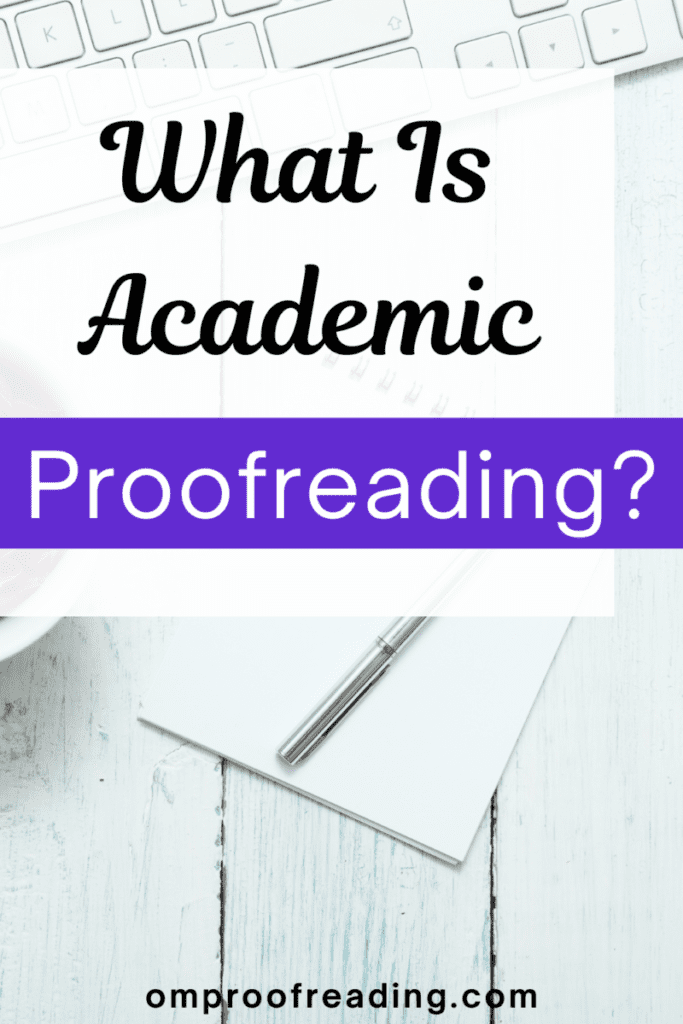
Lindsay Babcock
Lindsay is the creator of Om Proofreading. She has a BA in psychology and earned a certificate in proofreading by passing the final exam in Proofread Anywhere’s general proofreading course. She shares what she’s learning in the field and through research to inform and inspire her readers.
Recent Posts
6 Reasons Why Punctuation Is Important (with Examples)
Punctuation is important because it enables us to communicate our message clearly and effectively. Without punctuation, we wouldn’t understand how units of a sentence relate to one another or how...
What Is a Sentence Adverb? (+ Examples and a Quiz)
Although you're probably somewhat familiar with adverbs, you may be unaware of sentence adverbs. As a trained proofreader who has studied the parts of speech, I can help you understand this unique...

Importance of Editing and Proofreading in Academic Writing
Writing is the most effective way of communicating your research ideas and results. The quality of the research paper decreases if it is filled with spelling, punctuation, and grammatical errors. These errors undermine the credibility of your research work. This infographic highlights the importance of proofreading and editing of research papers as an essential requirement for any written matter. With the tips provided, you can apply them wisely to every piece of written communication. It may be short emails or lengthy original reports and get ready to be rewarded for a wonderfully written paper.
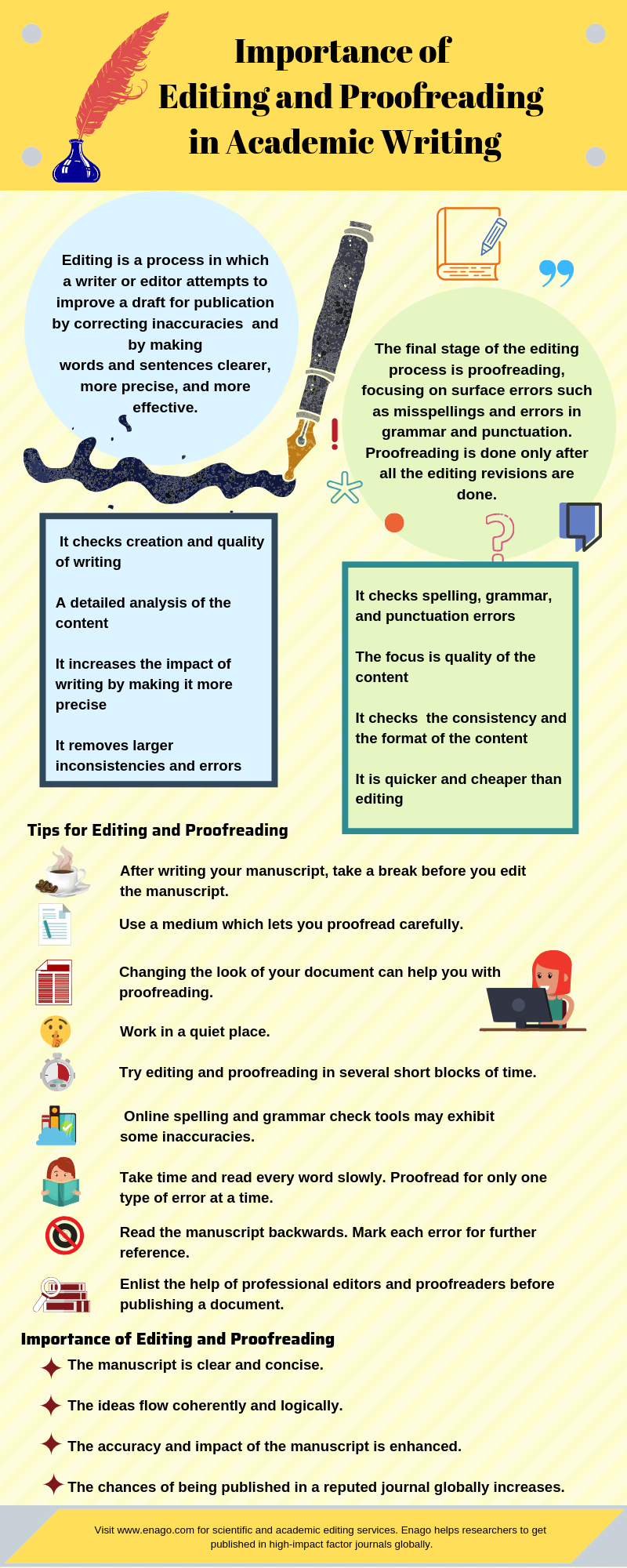
Rate this article Cancel Reply
Your email address will not be published.

Enago Academy's Most Popular Articles

- Career Corner
Academic Webinars: Transforming knowledge dissemination in the digital age
Digitization has transformed several areas of our lives, including the teaching and learning process. During…

- Manuscripts & Grants
- Reporting Research
Mastering Research Grant Writing in 2024: Navigating new policies and funder demands
Entering the world of grants and government funding can leave you confused; especially when trying…

How to Create a Poster That Stands Out: Tips for a smooth poster presentation
It was the conference season. Judy was excited to present her first poster! She had…

Academic Essay Writing Made Simple: 4 types and tips
The pen is mightier than the sword, they say, and nowhere is this more evident…
![importance of proofreading What is Academic Integrity and How to Uphold it [FREE CHECKLIST]](https://www.enago.com/academy/wp-content/uploads/2024/05/FeatureImages-59-210x136.png)
Ensuring Academic Integrity and Transparency in Academic Research: A comprehensive checklist for researchers
Academic integrity is the foundation upon which the credibility and value of scientific findings are…

Sign-up to read more
Subscribe for free to get unrestricted access to all our resources on research writing and academic publishing including:
- 2000+ blog articles
- 50+ Webinars
- 10+ Expert podcasts
- 50+ Infographics
- 10+ Checklists
- Research Guides
We hate spam too. We promise to protect your privacy and never spam you.
- Industry News
- Publishing Research
- AI in Academia
- Promoting Research
- Diversity and Inclusion
- Infographics
- Expert Video Library
- Other Resources
- Enago Learn
- Upcoming & On-Demand Webinars
- Peer-Review Week 2023
- Open Access Week 2023
- Conference Videos
- Enago Report
- Journal Finder
- Enago Plagiarism & AI Grammar Check
- Editing Services
- Publication Support Services
- Research Impact
- Translation Services
- Publication solutions
- AI-Based Solutions
- Thought Leadership
- Call for Articles
- Call for Speakers
- Author Training
- Edit Profile
I am looking for Editing/ Proofreading services for my manuscript Tentative date of next journal submission:

In your opinion, what is the most effective way to improve integrity in the peer review process?
What is Proofreading and Why is it Important

Table of Contents
Role of a proofreader , 5 reasons proofreading is important, how to proofread effectively: tips and tricks for proofreading content , key takeaways , conclusion .
Proofreading is made out of the terms “proof” and “read,” implying that it is a process of making text “error-proof after reading it.” It is a procedure that ensures that the text is error-free. Before a magazine or newspaper goes to print, it must go through the editing and proofreading process. Pages must be proofread for accurate spelling and grammar, margins and spacing must be modified to ensure that the articles flow smoothly, and photographs must be included within the articles to ensure that the flow seems consistent.
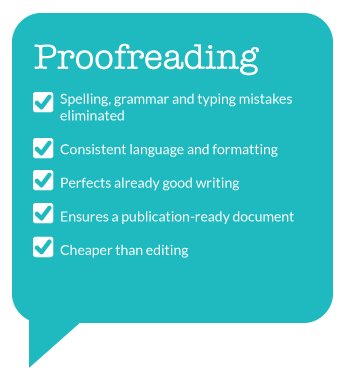
Why is it important? Proofreading allows us to ensure that we have spoken what we intend to convey in any piece of writing. It allows us to go over our work and add anything we may have overlooked. It assists us in ironing out any minor, unnecessary mistakes. Proofreading demonstrates that we take pride in our work and that it is the best we can make it.
Proofreaders are frequently in charge of all of these critical details; they are the professionals that ensure that publications look their best. Proofreaders will look for basic and complicated faults in papers. Spelling and grammatical problems are not permitted when an article is submitted for publication. Errors may jeopardize the credibility of a publication. Proofreaders are members of the publishing team who ensure that manuscripts look and read well before they go to print.
Proofreaders must be able to appropriately mark papers for adjustments and spot flaws in written material. Some proofreading companies have their proofreaders edit the documents as the writer reads them aloud. Proofreaders may be required to fix the same manuscript many times. The work is not finished until the document is clear of errors.
If we want our readers to concentrate on the substance of our writing rather than the problems and errors that we have neglected and left in our writing, we need to get it proofread. When our written work is flawless, it demonstrates that we pay attention to detail and care about the products we create. This adds power and authority to our writing.

Effective proofreading is required for the creation of very professional, high-quality content. When proofreading is done thoroughly and properly, it may significantly impact your writing style, particularly in terms of expressing your message to the readers. No author can generate great work without reviewing; thus, proofreading is critical throughout the writing and presentation processes. Proofreading your work may seem a waste of time, but it is nearly as crucial as authoring the material itself! Here are five reasons why.
1. It allows people to concentrate on our message rather than our faults
Errors that are overlooked are bothersome. Do we want our viewers to trip over mistakes while attempting to understand what we’re saying? Obviously not. We want them to have a consistent reading experience so that our message is unmistakable. Our writing should attempt to enlighten, even enchant, rather than frustrate.
2. A competitive advantage
If you proofread your work thoroughly, it will seem professional. A well-crafted piece of writing may be enjoyable to read, and the additional work will pay off in the end.
3. It assures that we speak what we mean
We all know that punctuation may alter the meaning of a statement. Perhaps you’ve seen the famous internet meme depicting two variations of the same sentence:
“A woman, without her man, is nothing.”
“A woman: without her, man is nothing.”
We can all agree that these two phrases have nothing in common. Do they use the same terms in the same order? Yes. Do they both signify the same thing? Not at all. Consequently, proofreading may help you prevent making mistakes in your writing.
4. Machines vs. humans
Although built-in spelling and grammar checks in word processors may be useful, they are not as accurate as a human set of eyes, especially if those eyes belong to a seasoned editor! You may believe that the absence of red error lines in your Microsoft Word document indicates that you have a flawless piece of writing, but there are specific errors that a machine just cannot detect.
A computer, for example, will not always detect if you mix homophones (two words that sound the same but are spelled differently).
5. It enables us to create an excellent first impression
People are more inclined to see us as polished and refined if our writing is polished and refined. Our written word is often the first way we impact an audience—it represents us when we are not there. And we’ve all heard what they say about first impressions.
Over time, professional proofreaders develop their style and approach for properly proofreading papers. This method may differ with the kind of document. Technical writing with calculations or complex numbers may need a proofreader paying close attention to grammar and capitalization. For example, there is no gap between a word and a parenthesis in chemical formulations, although there is in English.

Many professional proofreaders think that it is more efficient to begin their job by evaluating various areas at a time. A proofreader, for example, may start by going through all of the headings and chapter names to verify they are consistent and accurate. The proofreader may then look through the material again, concentrating on any tables or figures. A proofreader will only look over the full work toward the end to check for any issues or mistakes that they missed the first several times.
While each proofreader has their unique technique, there are a few things that all proofreaders should keep in mind. The following are some pointers from experienced proofreaders to make your work simpler.
- Make a proofreading checklist.
Make a note of the sorts of errors you often make and refer to it the next time you proofread. Hopefully, this will help you avoid making the same errors in the future.
- Look for just one sort of issue at a time.
Read the content numerous times, focusing on sentence structures first, then word choice, spelling, and lastly, punctuation. You’re sure to find trouble if you look for it, as the phrase goes.
- Read it aloud
It is sometimes simpler to detect faults when you hear what you read. Reading aloud might also help you concentrate.
- Never, ever depend only on spellchecking software.
While spellcheckers may be quite helpful, they cannot handle the complete work for you. Spellcheckers will not detect incorrectly used words (to vs. too vs. two). Furthermore, if you are revising a document or article that contains foreign language terminology, spellcheckers will struggle to differentiate mistakes correctly.
- Familiarize yourself with the Corpus of Contemporary American English and the British National Corpus
English is a complicated and inconsistent language with many variants. There may be more than one correct answer at times. If you’re not sure whether to use “on” or “in,” or if Americans use “analyze” or “analyse,” the corpus can inform you which words and phrases are used most often and in what context. Both are freely accessible online.
- Back up and read your text.
Another method for detecting spelling mistakes is to read backward, from right to left, beginning with the last word in your paragraph. This will allow you to concentrate on individual words rather than phrases, preventing you from relying on context as a crutch.
- Take a break from reading the content.
You should never complete drafting a piece and then start proofreading it. You must take a gap of at least many hours, ideally several days, before returning to the material with fresh eyes.

- Proofreading is a method that assures that a text is error-free while being read aloud by the author to achieve its intended result.
- To ensure that the articles flow smoothly, pages must be reviewed for correct spelling and grammar; margins and spacing must be adjusted as necessary; images must be incorporated throughout the article to ensure that the flow seems constant.
- Proofreading helps us ensure that we have communicated what we wanted to in any piece of writing. It allows us to go over our work and correct any mistakes we may have made.
- Although word processors with built-in spelling and grammatical checks are convenient, they are not as accurate as a second pair of eyes.
- To achieve successful results, create a proofreading checklist for yourself, then follow it. Look for just one kind of error at a time, read it aloud, and never, ever rely only on spellchecking software to catch mistakes.
Proofreading is one of the most significant and effective strategies to guarantee that writing does not cause misconceptions or make us seem unprofessional. We are all human, and no one is flawless, but the last thing we want is someone (particularly someone we want to impress) to dismiss or be baffled by what we are trying to communicate because of a spelling or grammatical error. This is why proofreading is such a vital part of the writing process.
Proofreading may come at the end of the content writing process, but this does not imply that it is unimportant. It guarantees that the document is error-free and polished to an exceptionally high degree.
Proofreading (sometimes known as “proofing”), editing, and copyediting are often confused as interchangeable services. The fact is that they all represent varying degrees of service. The service you choose will be determined by whether you want someone just to examine your writing for punctuation and grammatical faults or enhance your entire writing.
Proofreading involves checking for problems in content including grammar, punctuation, missing words, extra words, format, etc.
As you learn to proofread, strive for consistency and logical, clear reasoning. You should avoid making assumptions and second-guessing yourself. Learn to believe just what you see on the page, but also to be alert that your eyes aren’t deceiving you.
If the proofreader is acquainted with the publisher’s style guide and other standards, a thousand words should take around 15–20 minutes. Proofreading for a new customer, on the other hand, may take longer since the proofreader may encounter errors that need to be double-checked.
Research proofreading is merely reading a research paper or essay to find grammatical, linguistic, or statistical problems. It is also necessary to proofread the document to spot problems in the research paper’s content.
Latest Blogs
In this blog, explore the golden rules of using AI marketing tools so you can leverage the benefits to their maximum potential.
In this blog, you’ll learn how to avoid the pitfalls of SEO over-optimization while enhancing your site’s performance.
In this article, we’ll take a look at what AMP is, its advantages and disadvantages, and how it affects SEO.
Get your hands on the latest news!
Similar posts.

9 mins read
Content Marketing vs Advertising – Which One is More Effective?

11 mins read
Interactive Content vs. Static Content: Which is More Effective?

6 mins read
Unlocking Success: 4 Case Studies of Successful Content Marketing Campaigns Using a Platform
« The Power of Supporting Sentences: Building Strong Arguments
- The Crucial Importance of Proofreading: Polishing Your Words to Perfection
Introduction
Proofreading is a process that often goes unnoticed but plays a pivotal role in ensuring the clarity, professionalism, and credibility of any written work. Whether you are a student submitting an essay, a professional crafting a report, or a novelist working on your magnum opus, the importance (or rather, volume) of proofreading cannot be overstated. This article will examine the importance of proofreading and how it enhances writing.
- Eliminating Errors
One of the most prominent and immediate benefits of proofreading is eliminating errors. Spelling mistakes, grammatical errors, and typos can undermine your message and distract readers from your intended content. A misplaced comma or incorrect homophone can alter meaning. Proofreading rectifies issues for clear communication.
- Enhancing Clarity
Clarity is the cornerstone of effective communication. When your writing is clear, readers can effortlessly understand your message. Proofreading allows you to identify and rectify sentences that may be convoluted or ambiguous. It ensures that your ideas are presented logically and coherently, making it easier for your audience to grasp your message.
- Maintaining Professionalism
Whether you’re writing a business proposal, a resume, or a formal email, professionalism matters; errors in your writing can create the impression of sloppiness and a lack of attention to detail. In contrast, well-proofread content exudes professionalism and competence. It demonstrates that you care about your work and take the time to ensure its quality.
- Enhancing Credibility
In academic and professional settings, credibility is paramount. When your writing is riddled with errors, it can erode trust and cast doubt on the accuracy of your information or the validity of your arguments. A well-proofread document, on the other hand, bolsters your credibility by showcasing your commitment to accuracy and precision.
- Improving Readability
Have you ever tried to read a passage that needed to be clarified with errors? It’s a frustrating experience that can deter readers from engaging with your content. Proofreading improves the readability of your writing by removing distractions and making the text more inviting. When your writing flows smoothly, readers are likelier to stay engaged and absorb your message.
- Adhering to Style Guides
Different contexts and publications often require adherence to specific style guides, such as APA, MLA, Chicago, or AP style. Proofreading ensures that your writing complies with these guidelines, making it suitable for submission to academic journals, newspapers, or other publications. Adherence to the required style can result in rejection or a loss of credibility.
- Avoiding Embarrassment
Imagine sending out a job application or a business proposal with glaring errors. Such blunders can lead to embarrassment and missed opportunities. Proofreading protects against these situations, allowing you to present yourself or your business in the best possible light.
- Polishing Your Creative Work
For writers of fiction and poetry, proofreading is an essential step in the creative process. It helps refine the prose, fine-tune dialogue, and ensure consistency in character traits and plot elements. Even in the realm of creativity, the impotence of proofreading shines through as it elevates your work from a rough draft to a polished masterpiece.
Proofreading is a crucial step in the writing and publishing process, and a wide range of individuals and organizations across various fields and industries employ it. Here are some of the critical users of proofreading services:
- Students: Students at all levels, from elementary school to postgraduate studies, use proofreading to ensure their academic papers, essays, theses, and dissertations are free from errors and adhere to academic standards.
- Authors: Writers, novelists, and poets rely on proofreading to refine their creative works. Professional proofreaders help authors correct grammatical errors, improve sentence structure, and enhance the overall readability of their manuscripts.
- Businesses: Companies use proofreading for various purposes, including editing reports, marketing materials, website content, and business correspondence. Ensuring that business documents are error-free maintains a professional image and enhances credibility.
- Journalists and Editors: Professionals in the media industry, such as journalists and newspaper editors, use proofreading to eliminate errors in news articles, features, and opinion pieces before publication.
- Publishers: Publishing houses employ proofreaders to review manuscripts and ensure the final printed or digital publications are error-free, guaranteeing a high-quality product for readers.
- Translators: Translators often work with proofreaders to ensure that translated texts accurately convey the original meaning and are grammatically correct in the target language.
- Website Owners: Website owners and bloggers use proofreading to maintain the quality and professionalism of their online content. Error-free content can enhance user experience and improve SEO.
- Legal Professionals: Lawyers and firms rely on proofreading to ensure the accuracy and clarity of legal documents, contracts, and briefs.
- Government Agencies: Government agencies and organizations involved in policy development and document creation require proofreading to maintain professionalism and precision in official documents.
- Nonprofit Organizations: Nonprofits use proofreading to polish grant proposals, reports, and marketing materials to convey their mission and goals effectively.
- Educational Institutions: Schools, colleges, and universities use proofreading for various documents, including course materials, newsletters, and administrative communications.
- Medical and Scientific Researchers: Researchers in fields such as medicine and science use proofreading to ensure that research papers and articles are free from errors and meet the standards of academic journals.
- Marketing and Advertising Agencies: Marketing professionals proofread to guarantee that advertising copy, brochures, and promotional materials are error-free and convey the intended message.
- Technical Writers: Technical writers and engineers use proofreading to review technical manuals, product documentation, and instructional materials to ensure accuracy and clarity.
- Authors of Resumes and CVs: Job seekers use proofreading to create error-free resumes and CVs that showcase their qualifications and skills to potential employers.
In essence, proofreading is vital for anyone who produces written content and wants to ensure its accuracy, clarity, and professionalism. It helps individuals and organizations communicate effectively and make a positive impression on their audience.
Proofreading involves carefully reviewing written content to identify and correct grammar, spelling, punctuation, syntax, and formatting errors. There are several types of proofreading, each tailored to specific needs and contexts. Here are some common types of proofreading:
- General Proofreading: This is the most common type of proofreading, where the focus is on identifying and correcting errors in grammar, spelling, punctuation, and syntax. It ensures that written content is free from basic language errors and is easy to understand.
- Academic Proofreading: Academic proofreading specializes in academic documents such as essays, research papers, theses, and dissertations. It corrects grammar and spelling and ensures adherence to citation styles (e.g., APA, MLA, Chicago) and academic conventions.
- Technical Proofreading: Technical proofreading is used for documents with specialized terminology or technical content, such as user manuals, engineering reports, scientific papers, and technical documentation. The focus here is on ensuring the accuracy and clarity of technical information.
- Legal Proofreading: Legal documents, contracts, agreements, and legal briefs require meticulous proofreading to ensure precision, clarity, and adherence to legal conventions. Legal proofreaders also check for consistency in terminology and formatting.
- Medical Proofreading: In the healthcare industry, medical proofreading is essential for medical research papers, patient records, pharmaceutical documentation, and clinical reports. Accuracy and adherence to medical terminology and guidelines are crucial.
- Financial Proofreading: Financial documents, including annual reports, financial statements, and investment prospectuses, demand rigorous proofreading to guarantee accuracy and compliance with financial regulations and reporting standards.
- Marketing and Advertising Proofreading: Marketing materials, advertising campaigns, brochures, and promotional content require proofreading to ensure that the message is clear, persuasive, and free from errors. It also checks for consistent branding and style.
- Website Content Proofreading: Websites need error-free and well-structured content to provide a positive user experience and improve search engine rankings. Proofreading for web content includes checking for broken links and ensuring consistent formatting.
- Resume and CV Proofreading: Job seekers often use proofreading to polish their resumes and CVs. This type of proofreading ensures that these documents are error-free, well-organized, and showcase qualifications and experience.
- Multilingual Proofreading: For translations and content targeting an international audience, multilingual proofreading ensures that the translated or multilingual content is accurate, culturally appropriate, and free from language errors.
- Manuscript Proofreading: Authors, novelists, and playwrights use manuscript proofreading to refine their creative works. It focuses on grammar, punctuation, plot and character details consistency, and overall readability.
- Business Proofreading: Business documents, including reports, memos, emails, and presentations, benefit from proofreading to ensure clarity, professionalism, and accuracy in communication within the corporate environment.
- Copy Editing: While not the same as proofreading, copy editing involves a more comprehensive review of content, including structural improvements, style adjustments, and fact-checking, in addition to correcting errors. It is often employed in journalism and book publishing.
Proofreading involves carefully reviewing written content to identify and correct grammar, spelling, punctuation, syntax, and formatting errors. Here are some examples of proofreading in action:
- Original: “I have a buisness meeting tomorrow.”
- Proofread: “I have a business meeting tomorrow.”
- Original: “The cat its sleeping on the couch.”
- Proofread: “The cat is sleeping on the couch.”
- Original: “She arrived early ; however, the meeting was delayed.”
- Proofread: “She arrived early; however, the meeting was delayed.”
- Original: “The team are playing well together.”
- Proofread: “The team is playing well together.”
- Original: “After eating a big dinner, the movie was watched by us.”
- Proofread: “After eating a big dinner, we watched the movie.”
- Original: “The President visited the Capital last week.”
- Proofread: “The president visited the capital last week.”
- Original: “Their going to the park too.”
- Proofread: “They’re going to the park too.”
- Original: Inconsistent bullet points in a list.
- Proofread: Ensuring that bullet points are consistent in style and indentation.
- Original: Incorrect citation format in an academic paper.
- Proofread: Ensuring that citations and references follow the appropriate style guide (e.g., APA, MLA).
- Original: Inconsistent use of British and American English spellings within the same document.
- Proofread: Ensuring consistent spelling throughout the document (e.g., “color” vs. “colour”).
- Original: Long, convoluted sentences that are difficult to understand.
- Proofread: Breaking long sentences into shorter, more readable ones for clarity.
- Original: Using “NASA” in one instance and “the National Aeronautics and Space Administration” in another without consistency.
- Proofread: Maintaining consistency in using abbreviations and acronyms throughout the document.
- Original: Missing page numbers or inconsistent headers/footers in a document.
- Proofread: Ensure that page numbers and headers/footers are formatted and consistent.
These examples illustrate the various aspects of content that proofreaders check and correct to enhance the overall quality, clarity, and correctness of written materials. Whether you’re proofreading a simple email, an academic paper, a business report, or a creative manuscript, attention to detail is critical to producing polished and error-free content.
Each type of proofreading serves a unique purpose and requires specialized knowledge and skills. The choice of which type to use depends on the specific needs of the document and the intended audience.
Numerous online proofreading websites and services are available to help individuals and organizations improve the quality of their written content. Here is a list of some reputable proofreading websites and services:
- Grammarly: Grammarly is a popular online proofreading and grammar-checking tool that provides real-time suggestions for spelling, grammar, punctuation, and clarity improvements. It offers both free and premium versions.
- ProWritingAid: ProWritingAid offers comprehensive writing analysis and suggestions for improving style, grammar, and readability. It includes features like grammar checking, style editing, and plagiarism detection.
- Hemingway Editor: Hemingway Editor helps users improve the readability of their writing by highlighting complex sentences, adverbs, passive voice, and other readability issues. It’s available both online and as a downloadable desktop application.
- Scribendi: Scribendi is a professional proofreading and editing service that offers editing for various documents, including academic papers, business documents, and manuscripts. It provides human editors for a fee.
- Ginger Software: Ginger offers grammar and spelling correction, sentence rephrasing, and translation services. It is available as a browser extension and a desktop application.
- WhiteSmoke: WhiteSmoke is a writing enhancement tool that provides grammar checking, style improvement suggestions, and plagiarism detection. It offers both online and desktop versions.
- LanguageTool: LanguageTool is an open-source grammar and style checker that supports multiple languages. It’s available as a web-based tool and a browser extension.
- PaperRater: PaperRater offers grammar and plagiarism checking for academic and business documents. It provides a free version with limited features and a premium version with more comprehensive editing tools.
- Wordy: Wordy is a professional proofreading and copy-editing service that provides editing for various types of content, including academic papers, websites, and business documents. It offers a pay-per-word pricing model.
- Editage: Editage offers professional editing and proofreading services for academic, scientific, and research documents. They have a team of subject-matter experts to assist with content improvement.
- Kibin: Kibin primarily provides student essay editing and proofreading services. Users can submit their essays for review and receive feedback and suggestions for improvement.
- Polished Paper: Polished Paper offers editing and proofreading services for academic, business, and creative writing. They have professional editors who review and improve written content.
Please note that while some of these services offer free versions or trials, others require payment for more extensive proofreading and editing services. The choice of which proofreading website or service to use will depend on your specific needs, budget, and the editing required for your documents.
In a world where the written word holds immense power, proofreading is a guardian of quality and clarity. Whether you’re writing for academia, business, or personal pleasure, the importance of proofreading cannot be overstated. The final touch transforms your words from mere text to a powerful means of communication, enhancing your credibility, professionalism, and the impact of your message. So, before you hit that “send” button or submit your work, remember to harness the power of proofreading to ensure that your words shine with the brilliance they deserve.
- The Power of Supporting Sentences: Building Strong Arguments
- The Art and Science of Resume Proofreading: Crafting Your Path to Professional Success
- Mastering the Art of Reference Writing: A Comprehensive Guide
- The Art and Importance of Proofreading Websites: Elevating Online Content Quality
- The Crucial Role of Proofreading Services for Students
- Proofread or Proof Read? Clarifying the Confusion
- The Power of Proofreading with Grammarly: Elevating Your Writing to Perfection
- A Comprehensive Guide on How to Publish an Academic Paper
- Unlock Your Writing Potential with a Free Proofreading Course
- Elevate Your Writing with Professional Essay Proofreading Services
- Data: Singular or Plural? Unraveling the Grammar Puzzle
- Thank You For Subscribing
Powered by WordPress and Simple Affiliate WordPress Theme
- AI Technology
What Is Proofreading? Importance + Proofread Methods
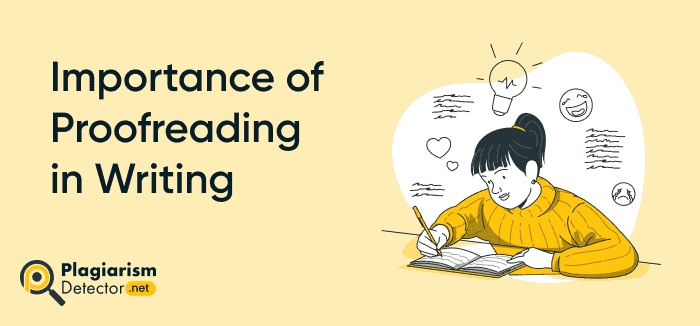
The process of writing involves several steps. First comes the research stage, which entails finding the content to be discussed. Afterward, the writing process begins, where people use their understanding of the researched material to formulate a complete write-up.
Finally, there is the proofreading phase. Proofreading is one of the most crucial phases of the writing process. However, since this step generally takes time, people must pay more attention.
If you all follow the same practice, you’re doing it wrong In this blog, we’ll highlight the value of proofreading in writing. But first, we’ll discuss its core concept because this will make it easier to understand the importance of proofreading.
What Is Proofreading?
Proofreading is the process of reviewing a manuscript and marking any faults. This usually involves reading the written material carefully to identify various errors. Those mistakes often contain different writing-related flaws, such as consistency, grammar, punctuation, and spelling. So, identifying any writing issues in a text by reading it is known as proofreading.
What Is the Importance of Proofreading?
Up to this point, you may have understood the core concept of proofreading. If so, you’ll find it simpler to comprehend the following ideas that emphasize how important it is to proofread your text:
Helps Make Positive First Impressions
You may have heard the saying: ‘The first impression is the last impression.’ Well, this famous statement aligns perfectly with the importance of proofreading. Let’s find out with the help of an example.
Suppose you’re applying for a job, submitting a request for the publication of a research paper, or wanting to publish marketing materials. If it contains any writing mistakes, it will spoil your first impression. So, to make an excellent first impression on your audience, you should proofread your material before finalizing it.
Improves Clarity and Coherence
Creating content is only worthwhile if people understand it. If your writing often goes through a similar issue, you can take assistance from the art of proofreading.
For example, if you want to improve the understanding of your written material, it is essential to proofread it. This way, you can easily spot any confusing paragraphs or hard-to-understand sentences. Using a rewording tool , you can improve your write-up’s engagement, coherence, and logical flow. Doing so will also enhance your text’s readability score and raise its success ratio.
Makes the Writing Sound Professional
Newbies often struggle to make their impression and stand out in a text-heavy environment. But proofreading can help them accomplish these things like pros. Since this technique guarantees the creation of a polished and error-free writing piece, it can help even novice writers sound like professionals.
Ensures Accuracy and Consistency
Content writing can be exhausting at times. Therefore, writers sometimes daydream or lose attention when creating content. Such circumstances lead to a variety of writing problems, including poor language usage, incorrect or absent punctuation marks , a lack of formatting or styling consistency, typos, and misspellings.
Fortunately, the art of proofreading offers a one-stop remedy to these problems. By reviewing and reading your content, you can instantly identify any flaws in formatting and style consistency and violations of writing practices. This will help you avoid misconceptions and miscommunications while protecting your reputation.
How to Proofread Content?
Proofreading can only benefit your writing if you do it right. So, here are some suggestions to help you proofread the content perfectly:
Read Your Text Thoroughly
Reading your material in detail is the best way to identify all writing mistakes. You can either have someone else do it for you or utilize your word processor’s ‘ Read Aloud ’ option. This way, you can quickly identify and correct any errors in your content.
Concentrate on Just 1 Error at Once
Multitasking is one of the most common blunders people make during proofreading. This often leaves some writing errors unchecked. So, make sure to focus on one mistake at a time. For example, if you’re looking for spelling errors or typos, just review your text for them. You can address any remaining issues in the next iterations.
Employ a Grammar Checker
Technology has made its way into every field, and proofreading is no different. So, after finalizing your text, run it through an AI grammar checker . It works through contextual understanding. Therefore, you can quickly find and rectify all writing issues from your content.
Don’t Forget to Check for Punctuation
Proofreading involves more than simply correcting language mistakes. It is also necessary to identify inappropriate usage or the lack of punctuation marks. However, manual proofreading and grammar checkers do not always correct punctuation errors.In such situations, you can employ an AI-powered punctuation checker . The modern version of these tools also operates by processing the provided language. Therefore, they can reliably identify the missing or incorrectly placed punctuation marks.
Role of Punctuation Marks in Written Communication
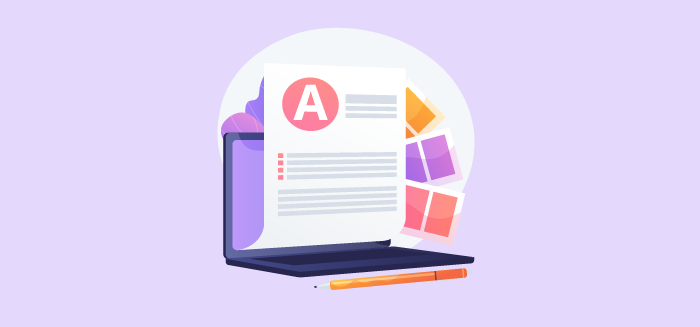
Accidental Plagiarism: How It Happens and Ways to Avoid It
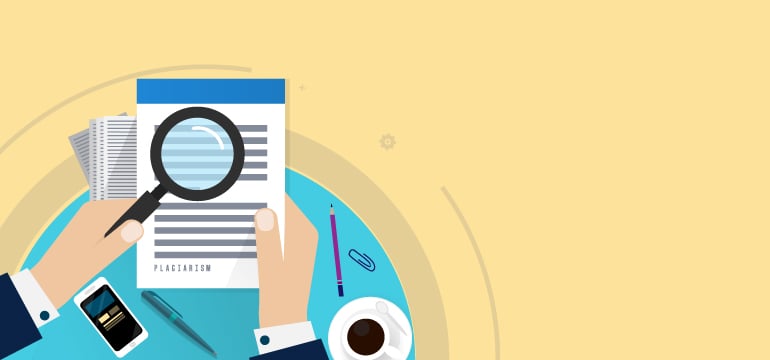
Content That Can Give Your eCommerce Website A Boost
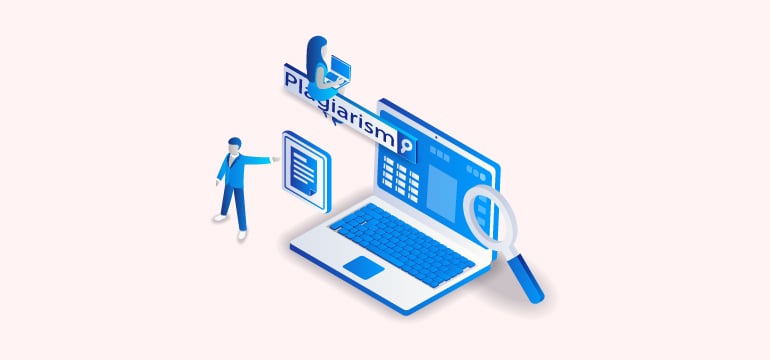
Cases from Common Academic Misconduct Scenarios faced by Students

Content Writing Tips: How to Write Plagiarism Free Content

The Importance of Proofreading
Before submitting or printing an academic research paper, essay, email, memo, or any other written document, it is very important to carefully proofread it. Proofreading of written material is the final step that must be taken before a document can be considered complete.
When proofreading a document, you should first read it slowly and carefully to determine whether or not it communicates its message. If the title or the introductory paragraph do not clearly signal the intent of the paper or if the paragraphs that follow do not naturally flow from that introduction, you might want to rewrite those parts of your paper. If the research does not seem to verify what you are attempting to communicate, you may wish to rethink your thesis or you may need to conduct further research.
Once that part of the proofreading process, the overview editing, has been completed, it is time to perform a more exacting analysis of the paper. During this part of the proofreading procedure, you should search for errors in spelling, word usage, grammar, and punctuation. After all, a poorly written paper cannot possibly communicate its message properly to the reader.
Before you can consider the proofreading process complete, you should verify your sources and make sure the document adheres to the rules of the style guide you are using, whether it is MLA, APA, ASA, AMA, Chicago, CSE, Turabian, AP, or another style.
Professional editors can proofread your document so the final product is well written, precise, and easy to read. It is important to carefully proofread all written material. Editing is not just the icing on the cake; it is an essential part of the writing process.
- Entertainment
Find us on Facebook
Explosion.com

3 reasons why proofreading is important
How to Design a Word Template
Proofreading is the final part of the review process of your content. Proofreading comes before presenting your content in front of a public audience. The name of the process says everything you need to know about it. The term consists of two words “proof” and “read”. So, it is a process of making the content “without errors after reading it”.
Proofreading helps you make the content fit and suitable for communicating the correct message to the target group. Before submitting or printing a paper, email, memo, essay, or any other written document, you have to proofread it. And if you want to make sure your professional content has no errors, you could consider hiring a professional. For example, there are some websites that do the proofreading for you, like At-it-translator.com .
Why do we proofread?
Proofreading gives you a chance to review your work. It ensures that the written content flows well, and the reader doesn’t have any problems reading it. But most importantly, proofreading helps you convey a clear message and meaning. It is the final stage of the editing process and focuses on surface errors. Here are some quick reasons to proofread:
- Fix any grammatical, numbering, and capitalization errors
- Ensure there are no spelling errors
- Fix punctuation mistakes
- Remove misplaced words and fix sentence structure error
- Fix the inconsistency in the format of the document
If you want your readers to focus on the content of your writing, not on the mistakes and the errors, make sure to proofread it. Perfect written work helps the reader to pay attention to details and read the content easily. With that in mind, here are a couple of reasons why should you consider proofreading.
Reason 1 – Damage to your image or brand
Let’s be honest for a second. The quality of your work reflects your professionalism. It is important to protect your brand and image. No matter the size of your organization, the quality of your work will deter or attract customers. Proofreading plays a vital part in the organization and protecting its brand.
What do you think when you read a news outlet, and you find misspelled words in the text? Does it affect your opinion about the website/newspaper? Of course, it does.
The same goes for your brand and organization. Put some effort and take time to perfect your written content. For the sake of professionalism, you have to execute your job to perfection.
Reason 2 – Unintended meaning
What is the difference between desert and dessert? Do you know it? One is a sweet delight, and the other is a barren area of landscape with little precipitation. In that regard, there is only 1 letter difference between sweet and sweat. And you definitely do not want sweat chocolate, right?
Proofreading can minimize and eliminate such misspelled words. You do not want your chocolate brownie recipe to end up in the desert, right?
Sometimes, just a single letter can completely change the meaning of your word, sentence, paragraph, and in that regard, written work.
Imagine printing an advert with misspelled words. Yes, it might go viral for the wrong reasons. But nobody will buy your product.
Reason 3 – The cost of fixing errors
Would you rather pay an “xxx” amount for proofreading, or completely reprint your business cards? Sometimes, it is as simple as that. Printing something with misspelled words might result in completely reprinting it just days after.
Proofreading saves you time and money to make things right. Your potential sales depend on it.
How to Proofread
Many people underestimate the importance of proofreading. They simply skip it. Usually, that is because they want to make the deadline and have no time to proofread. But proofreading can make the difference between an outstanding essay and a mediocre essay. Which one do you prefer?
Effective proofreading serves as a vital part of the production of high-quality content. If you are not good at it, you can involve professional editing or proofreading services .
When you proofread, read the content slowly first and then determine whether it communicates the message you want to send. If the title and the lead paragraph do not signal the intent of your content, there will be no natural flow.
Once you read the document once slowly, it is time for the second part of the proofreading process. Search for errors in spelling, word usage, grammar errors, and even punctuation mistakes.
The last part is verifying your sources. This is extremely important for academic papers and journals. Make sure that the document adheres to the style guide you use. That can be MLA, APA, ASA, Chicago, or any other style. Here are some proofreading techniques and tips by professionals.
- Avoid distractions and proofread in a quiet environment
- Read the piece out loud to spot faulty sentence construction
- Make short breaks during proofreading to refocus
- Take one line at a time
- Do not proofread your own work the moment you write it. Leave a short period between
- Get someone to do the final proofread
What does your writing say about you?
In today’s world of the digital age, we use written content to contact someone. Our writing skills serve as the first impression. And we know the rule, “there is no second chance for a first impression”. What do you want to say about you?
Even if you write the perfect article/content/essay/email, a few unnecessary errors in the writing can ruin the impression. Make sure your writing shows your best work.
And proofreading is the most beneficial way to do it. It is the last step in the writing process. But that doesn’t mean proofreading is the least important part of the process. Some might say it is the most important one. Proofreading adds power to our writing.
We would also like to stress out the difference between humans and machines. There is a built-in grammar checker in most applications for writing (Word for example). These built-in grammar checkers can help. But you should not rely on them alone.
The computer will not always notice that you mix up homophones. These are two words that sound the same but have different spelling. We also stressed that there are words with only 1 letter difference that have a completely different meaning. This is where humans have the advantage.
How to Improve CNC Machining Accuracy for Thin-Walled Parts

How to Choose Bridal Earrings for a Stunning Wedding Ensemble

Improve Your Dog’s Appearance with These Supplements for Healthy Skin and Coat

The Right Time to Start Exploring Senior Living Communities
- Harvard Library
- Research Guides
- Faculty of Arts & Sciences Libraries
Finding and Reading Journal Articles
- Journal Articles: Why You Use Them
Why are articles so important to research?
- Subject Databases: Organizing Research Conversations
- Databases We Recommend For You
- Sources in the Disciplines
- Reading in the Disciplines
Journal articles are the academic's stock in trade, t he basic means of communicating research findings to an audience of one’s peers. That holds true across the disciplinary spectrum, so no matter where you land as a concentrator, you can expect to rely on them heavily.
Regardless of the discipline, moreover, journal articles perform an important knowledge-updating function .

Textbooks and handbooks and manuals will have a secondary function for chemists and physicists and biologists, of course. But in the sciences, articles are the standard and preferred publication form.
In the social sciences and humanities , where knowledge develops a little less rapidly or is driven less by issues of time-sensitivity , journal articles and books are more often used together.
Not all important and influential ideas warrant book-length studies, and some inquiry is just better suited to the size and scope and concentrated discussion that the article format offers.
Journal articles sometimes just present the most appropriate solution for communicating findings or making a convincing argument. A 20-page article may perfectly fit a researcher's needs. Sustaining that argument for 200 pages might be unnecessary -- or impossible.
The quality of a research article and the legitimacy of its findings are verified by other scholars, prior to publication, through a rigorous evaluation method called peer-review . This seal of approval by other scholars doesn't mean that an article is the best, or truest, or last word on a topic. If that were the case, research on lots of things would cease. Peer review simply means other experts believe the methods, the evidence, the conclusions of an article have met important standards of legitimacy, reliability, and intellectual honesty.
Searching the journal literature is part of being a responsible researcher at any level: professor, grad student, concentrator, first-year. Knowing why academic articles matter will help you make good decisions about what you find -- and what you choose to rely on in your work.
Think of journal articles as the way you tap into the ongoing scholarly conversation , as a way of testing the currency of a finding, analysis, or argumentative position, and a way of bolstering the authority (or plausibility) of explanations you'll offer in the papers and projects you'll complete at Harvard.
- Next: Subject Databases: Organizing Research Conversations >>
Except where otherwise noted, this work is subject to a Creative Commons Attribution 4.0 International License , which allows anyone to share and adapt our material as long as proper attribution is given. For details and exceptions, see the Harvard Library Copyright Policy ©2021 Presidents and Fellows of Harvard College.

IMAGES
VIDEO
COMMENTS
Proofreading is the process of reviewing a piece of writing for errors in grammar, punctuation, spelling, and formatting. It helps to ensure that written work is clear, accurate, and easy to understand, and prevents confusion and negative consequences.
Proofreading is an essential step in the writing process, ensuring clear, concise, and well-organized messages. It involves correcting errors in grammar, punctuation, spelling, consistency, and formatting. Learn how proofreading can improve your writing, credibility, and reputation.
Proofreading is the last chance to find and fix errors before a document is presented to readers. Learn how proofreading can enhance your authority, reputation, impression, and chances of success in various domains.
Learn what proofreading is, why it is important, and how to do it effectively. Find out the difference between proofreading and editing, and get tips and tricks for catching errors in your text.
Proofreading is the final step in the writing process that ensures error-free, professional, and polished writing. Learn how to proofread effectively, what to look for, and use a checklist to catch mistakes.
This detailed guide explores the importance of proofreading, offers practical tips, and provides examples to help you become a more effective proofreader. Why Proofreading Matters. Enhances Clarity and Comprehension: Proofreading helps to catch and correct errors that can obscure your message. Clear writing ensures that your ideas are ...
Learn how to revise your writing by editing and proofreading. Find out the difference between editing and proofreading, get tips and strategies, and practice with a handout that contains errors.
In publishing, proofreading comes into play at the very end of the editorial process, after a manuscript has been corrected by a copy or line editor. The proofreader's job is to comb through the document and look for any mistakes that may have slipped through the cracks. Regardless of how meticulous the writer and editor have been, there will ...
The word proofreading has taken on a definition separate from the role it plays in the publication of manuscripts. What most people are referring to when they use the word proofreading is the process of checking a document for any kind of grammatical, typographical, or formatting errors. Proofreading should always be the last step taken before ...
Proofreading is the final check of a text or content before it's submitted. Proofreading is the process of reviewing the final draft of a text to ensure that all surface errors concerning grammar, punctuation, spelling, and formatting are corrected. Think of proofreading as giving your writing a final shine to make sure it doesn't have any ...
Proofreading. Proofreading refers to a step in the writing process --the act of critically reading a document with the goal of identifying errors at the word and sentence-level. Proofreading is crucial to establishing a professional tone in school and workplace contexts. Learn how to edit documents so that your works meet the needs and ...
Proofreading is carefully examining a written document to detect and correct errors. It enhances the accuracy, clarity, and professionalism of your writing, and improves its impact and engagement. Learn the definition, types, and benefits of proofreading, and how to do it effectively.
Proofreading is the process of carefully reviewing a written document for errors, inconsistencies, and improvements prior to its finalization or publication. This critical process involves scrutinizing the text for spelling, grammar, punctuation, formatting, typographical errors, and the overall presentation of the content, all in pursuit of ...
Proofreading is the last writing process before the author submits the article for publication. It is the stage of verification, by the author him or herself, or by another person. Thus, it is not only important to check grammar and spelling, it is also highly advised to ensure that the idea of the writer/author is in agreement with what he or ...
Proofreading a paper is just as important as any other aspect of writing; in fact, the process is instrumental in getting your ideas across in an accessible and logical manner. Before You Proofread. Before performing a final proofread, it's important to do an in-depth edit. Editing your paper allows you to examine how your ideas connect with ...
Academic proofreading is the proofreading of scholarly documents produced by professors, researchers, and students within colleges and universities. It involves checking these texts for proper grammar, capitalization, spelling, punctuation, and formatting. Academic proofreading has a few unique considerations compared to other kinds of ...
These errors undermine the credibility of your research work. This infographic highlights the importance of proofreading and editing of research papers as an essential requirement for any written matter. With the tips provided, you can apply them wisely to every piece of written communication. It may be short emails or lengthy original reports ...
Proofreading is a process of making text error-free by checking spelling, grammar, punctuation and flow. Learn why proofreading is important for professional and effective writing, and how to proofread effectively with tips and tricks.
Introduction Proofreading is a process that often goes unnoticed but plays a pivotal role in ensuring the clarity, professionalism, and credibility of any written work. Whether you are a student submitting an essay, a professional crafting a report, or a novelist working on your magnum opus, the importance (or rather, volume) of proofreading cannot be […]
Proofreading is the process of reviewing a manuscript and marking any faults. This usually involves reading the written material carefully to identify various errors. Those mistakes often contain different writing-related flaws, such as consistency, grammar, punctuation, and spelling. So, identifying any writing issues in a text by reading it ...
The Importance of Proofreading. Before submitting or printing an academic research paper, essay, email, memo, or any other written document, it is very important to carefully proofread it. Proofreading of written material is the final step that must be taken before a document can be considered complete. When proofreading a document, you should ...
Reason 1 - Damage to your image or brand. Let's be honest for a second. The quality of your work reflects your professionalism. It is important to protect your brand and image. No matter the size of your organization, the quality of your work will deter or attract customers. Proofreading plays a vital part in the organization and protecting ...
Not all important and influential ideas warrant book-length studies, and some inquiry is just better suited to the size and scope and concentrated discussion that the article format offers. Journal articles sometimes just present the most appropriate solution for communicating findings or making a convincing argument. A 20-page article may ...